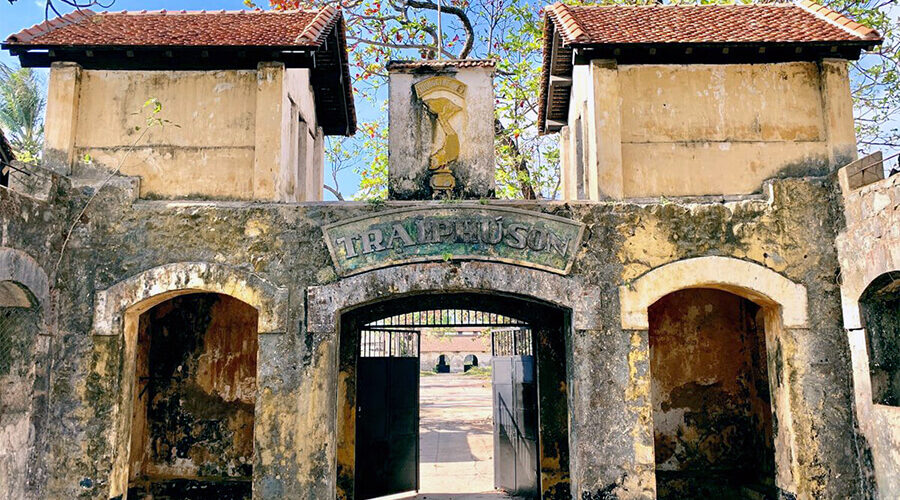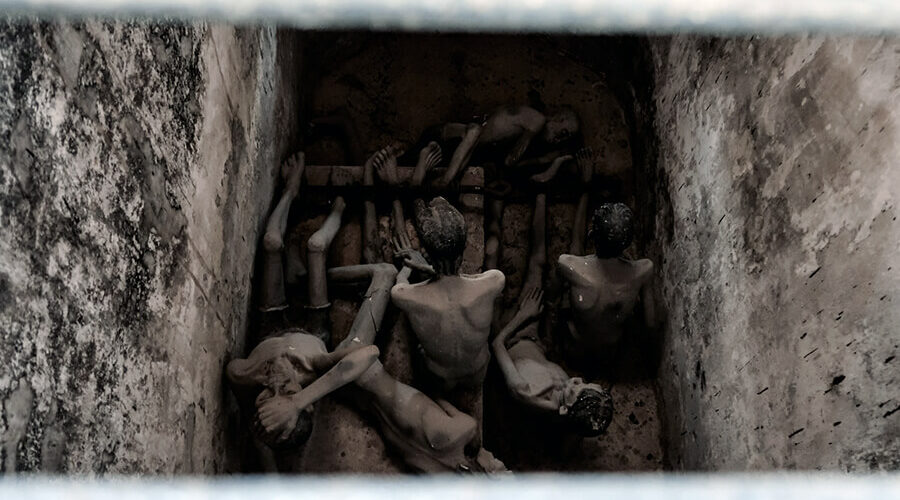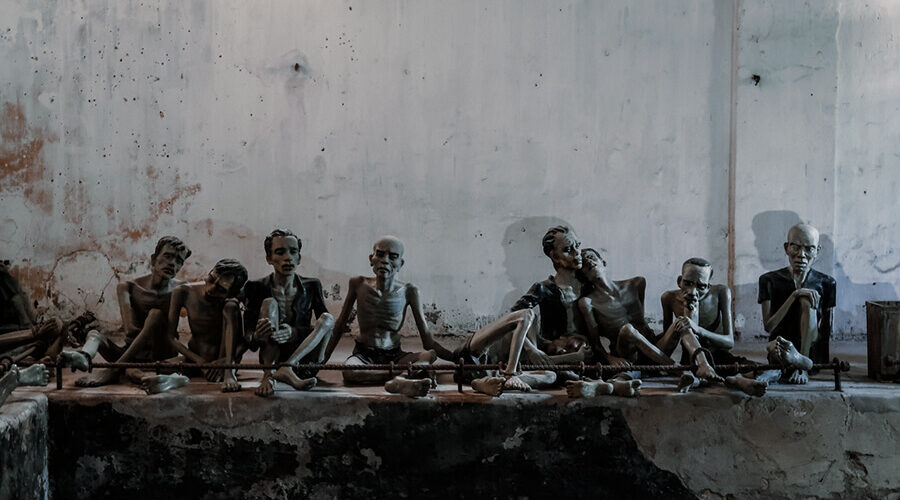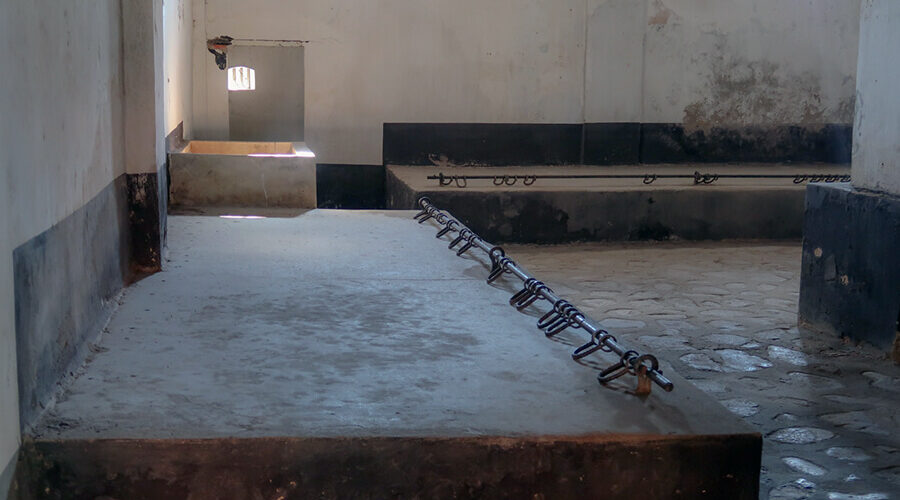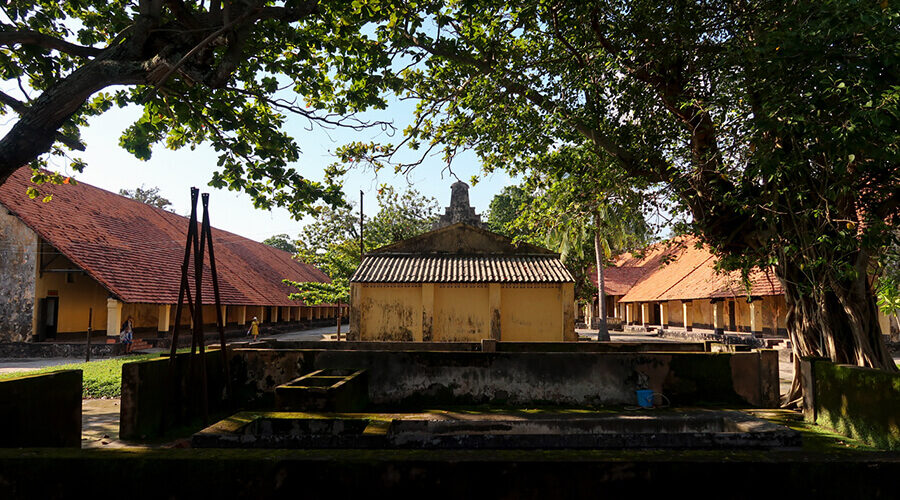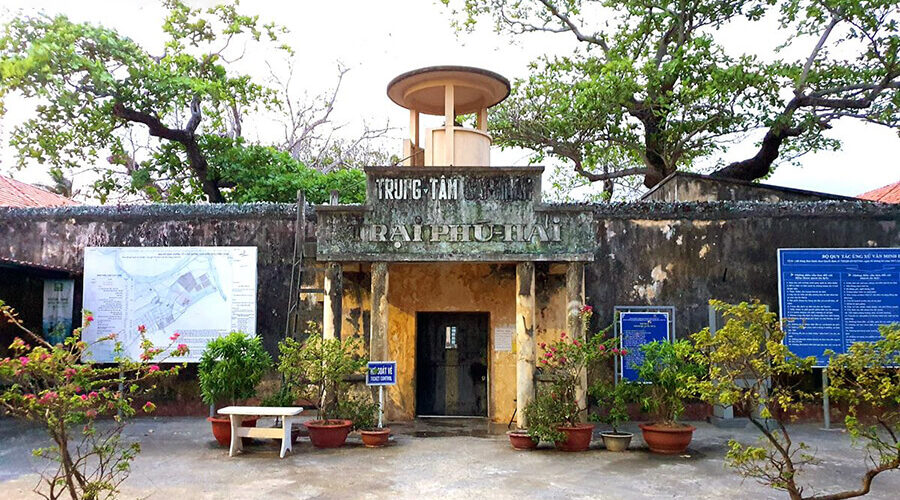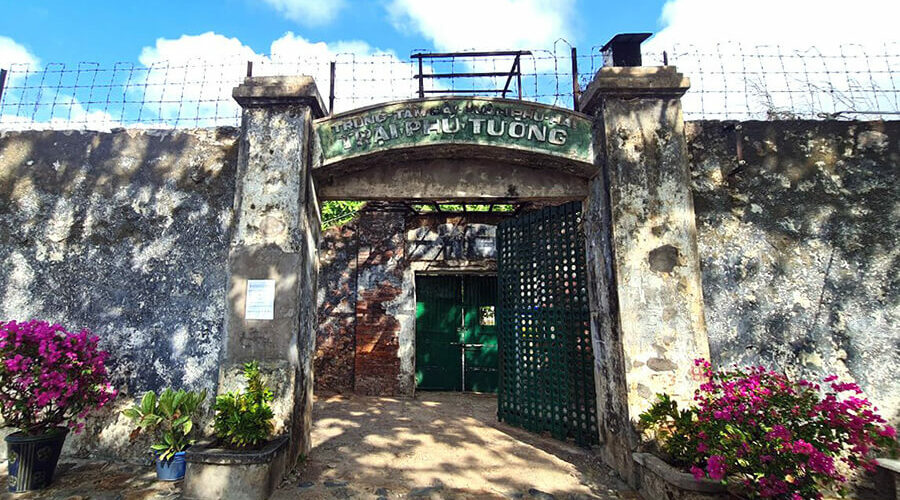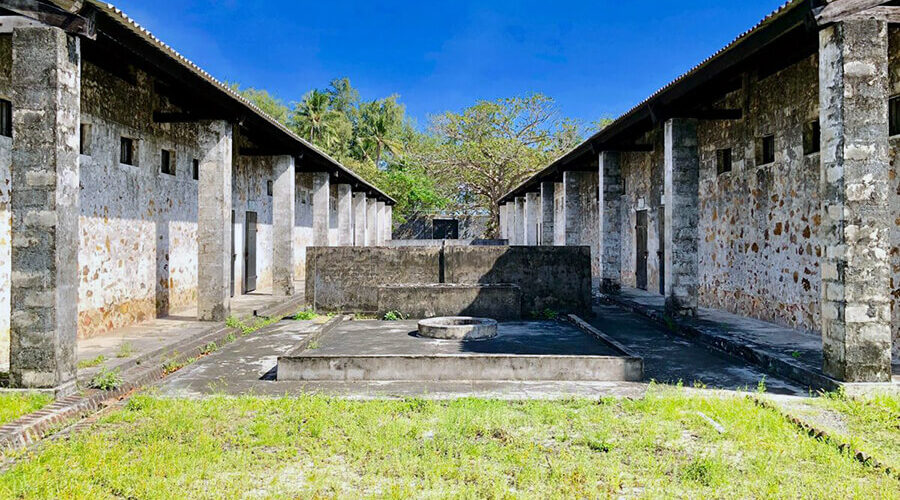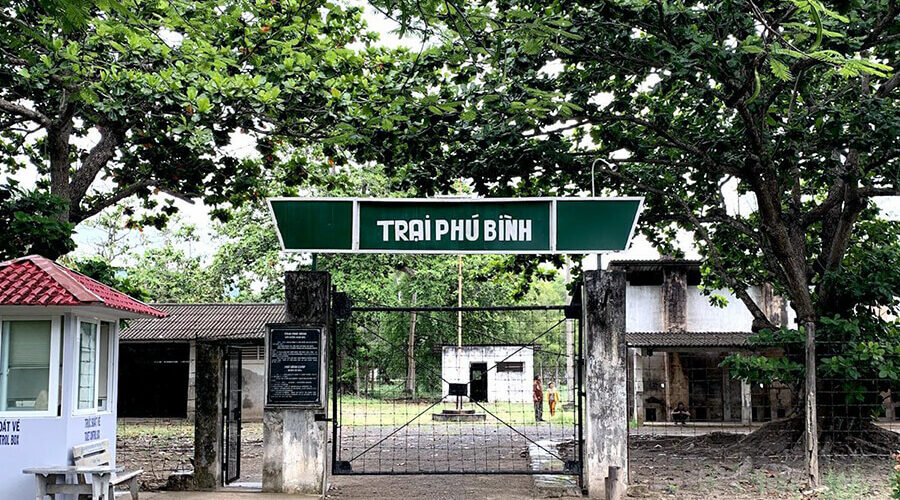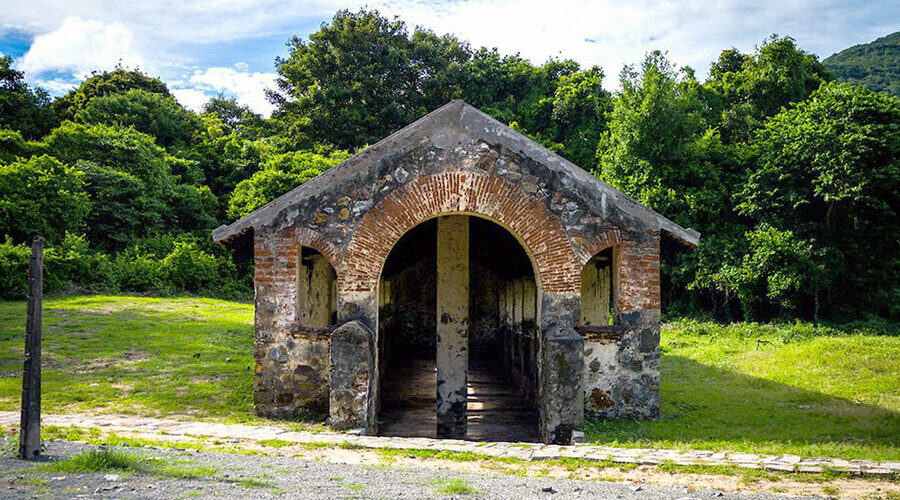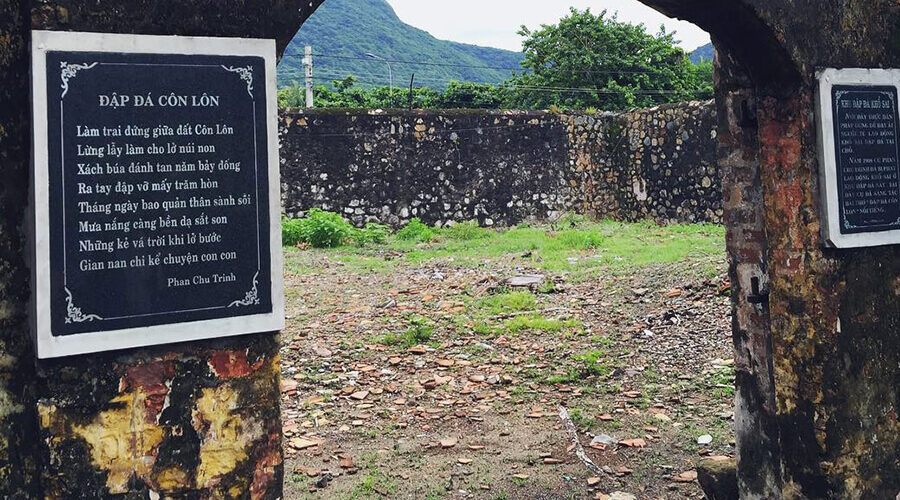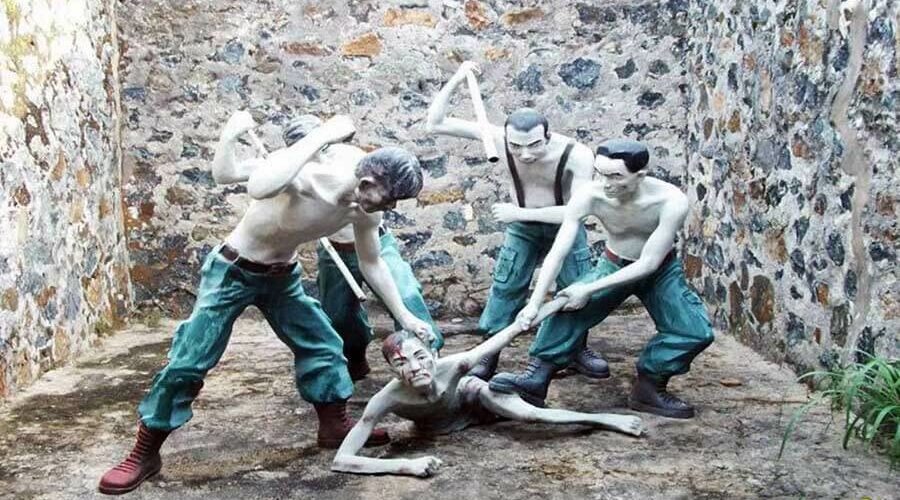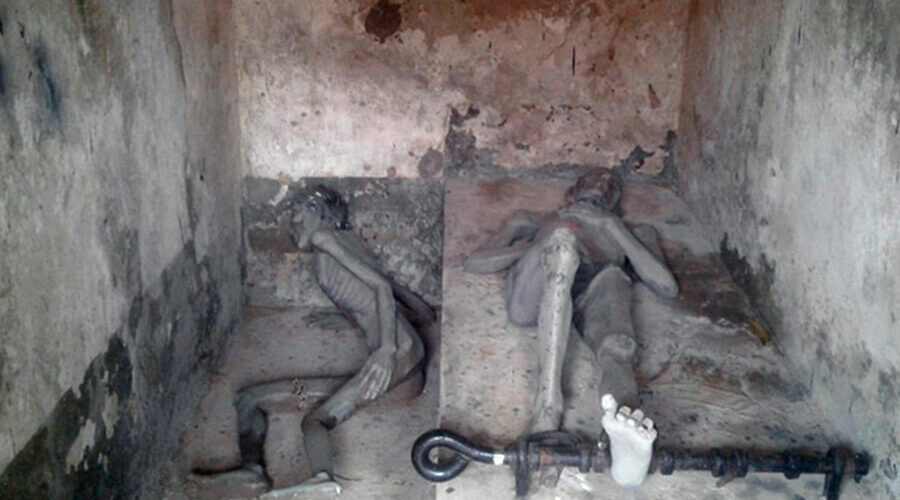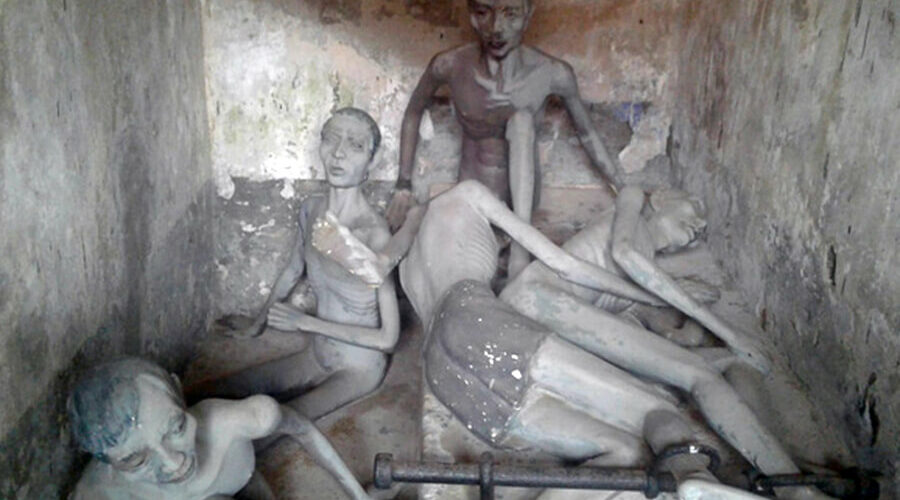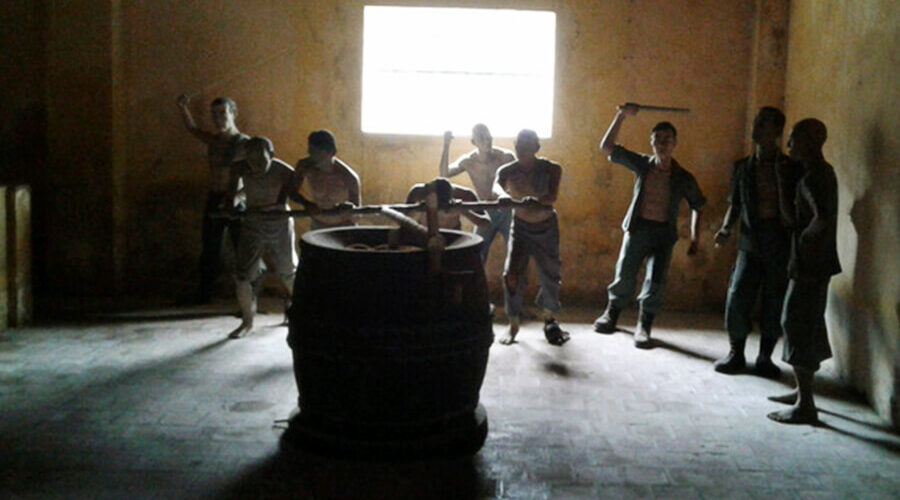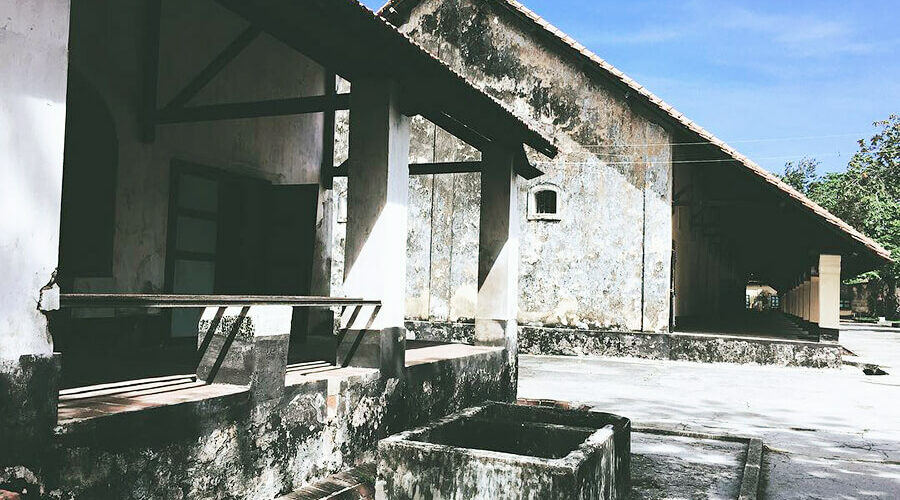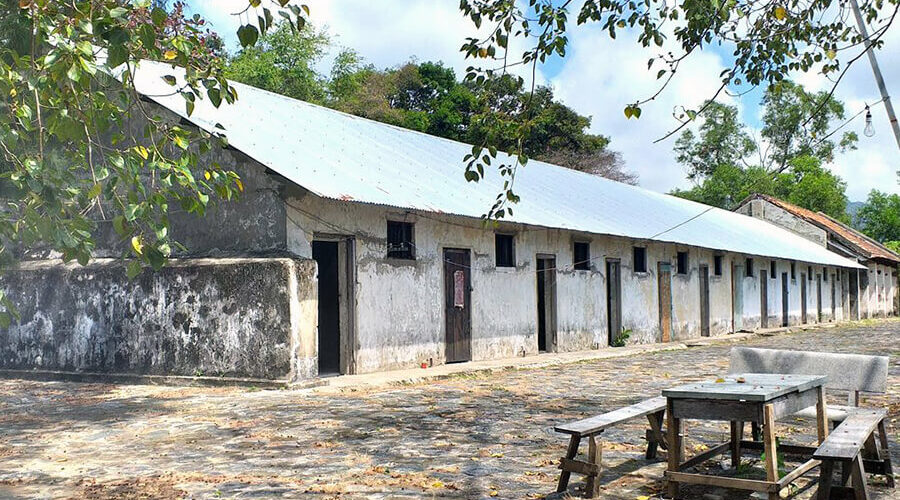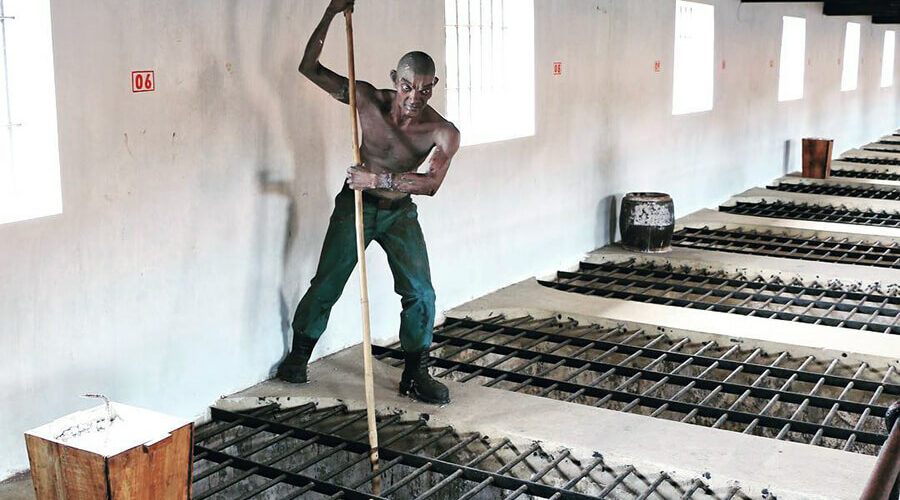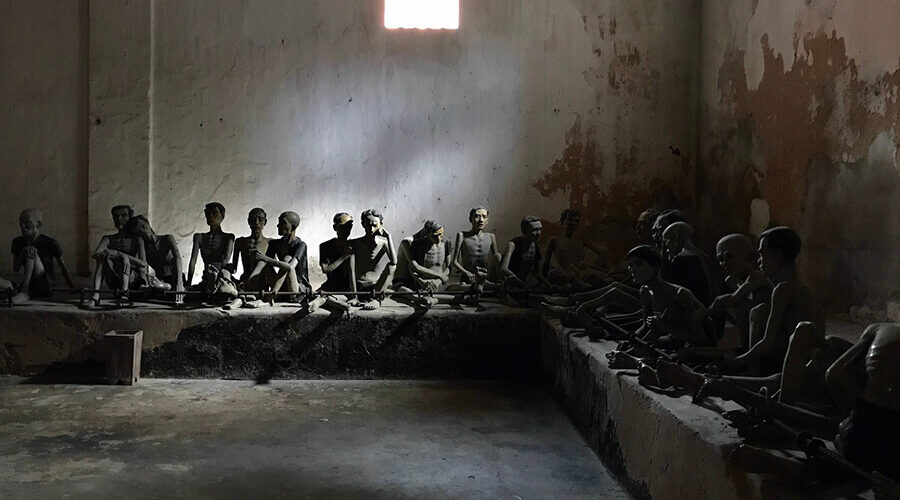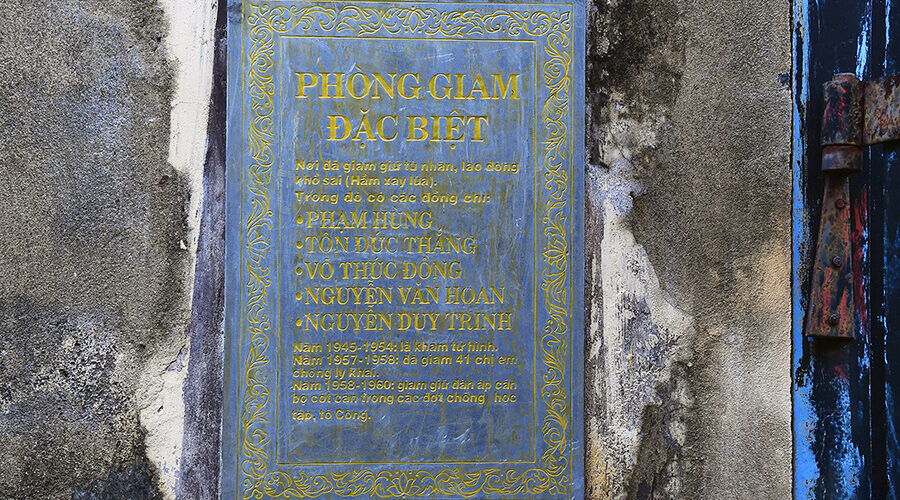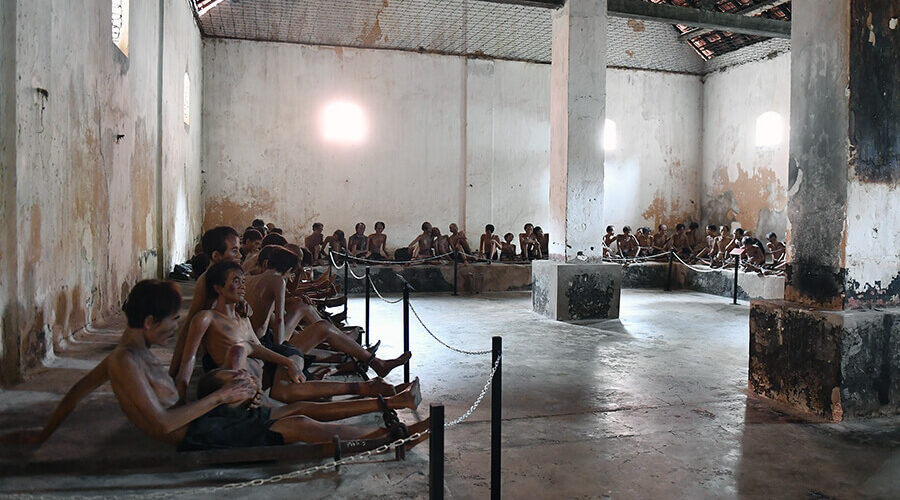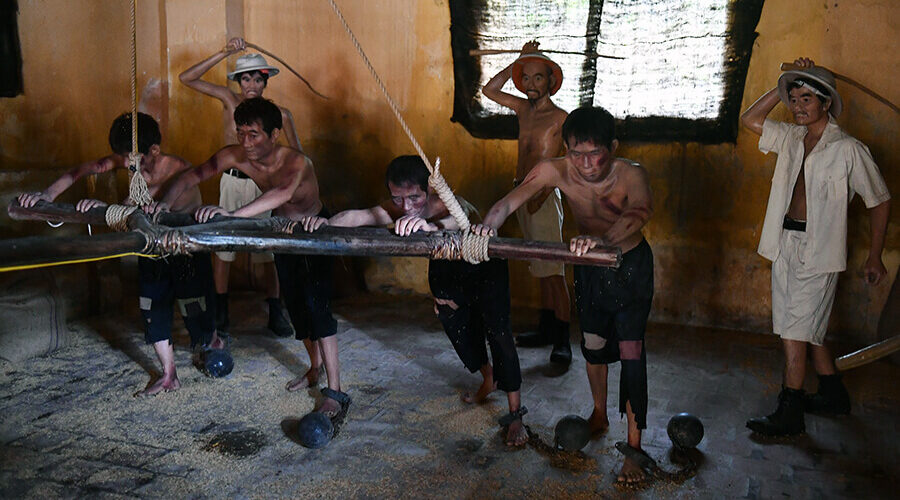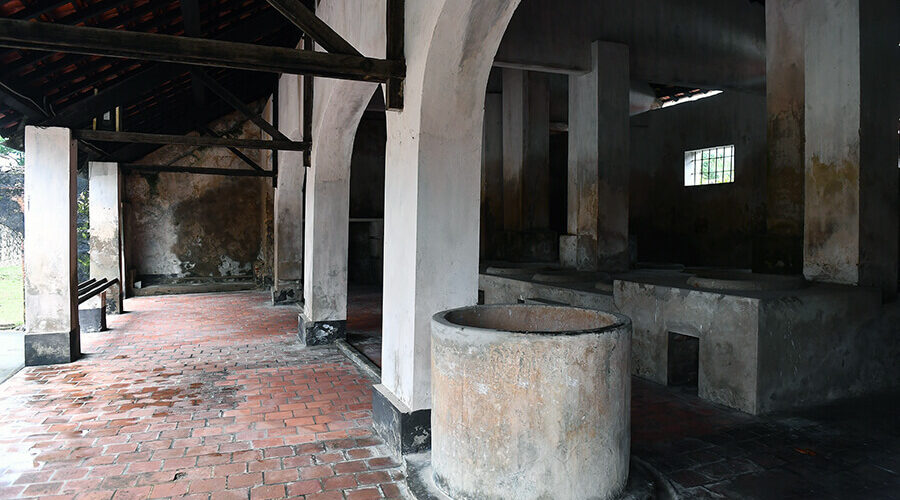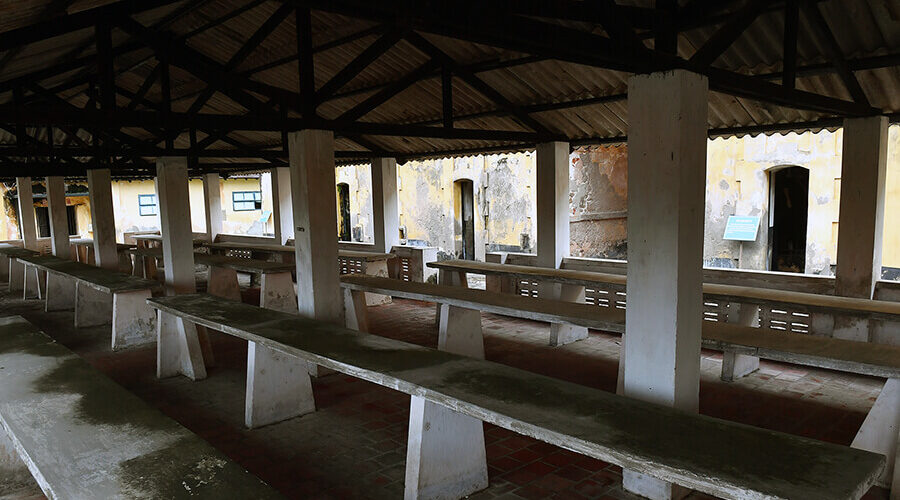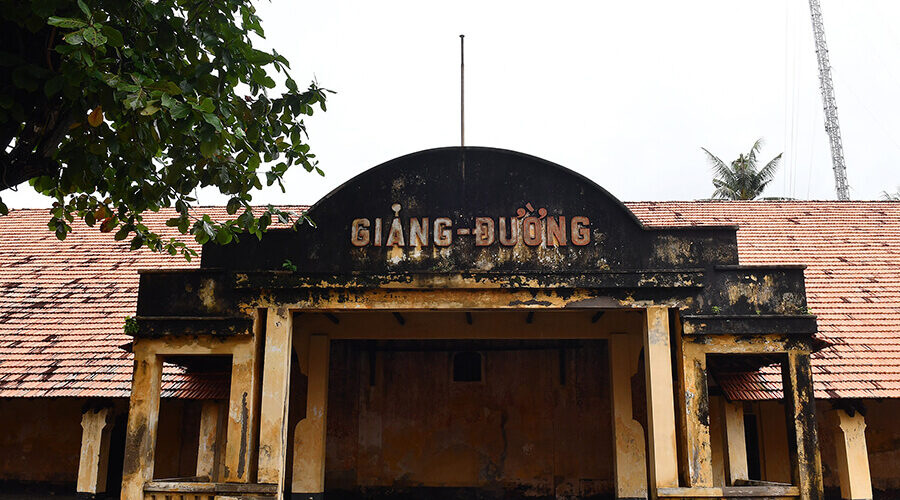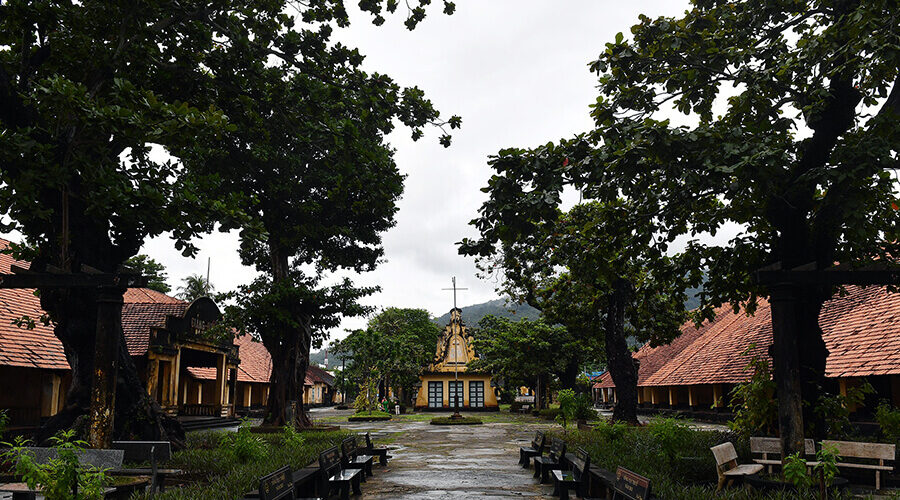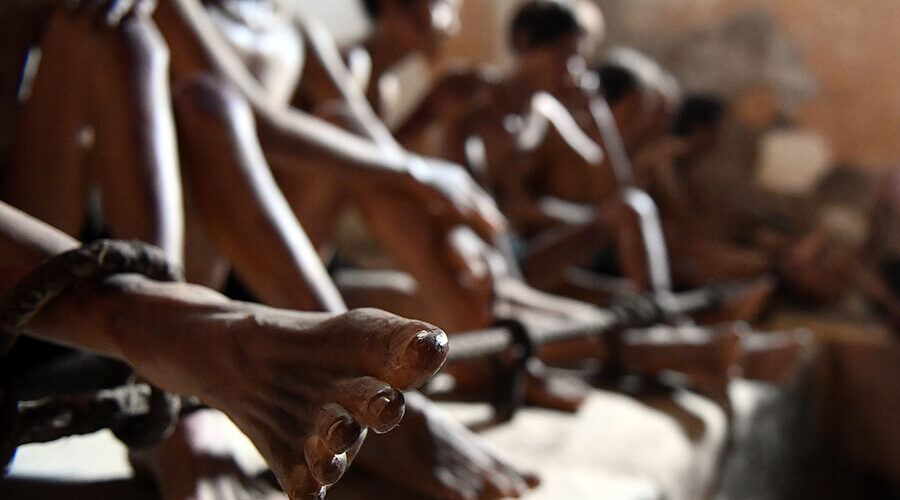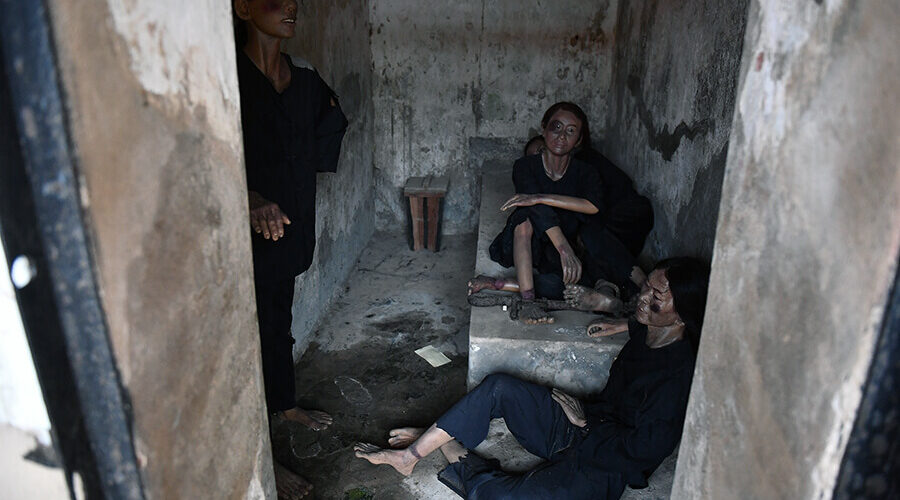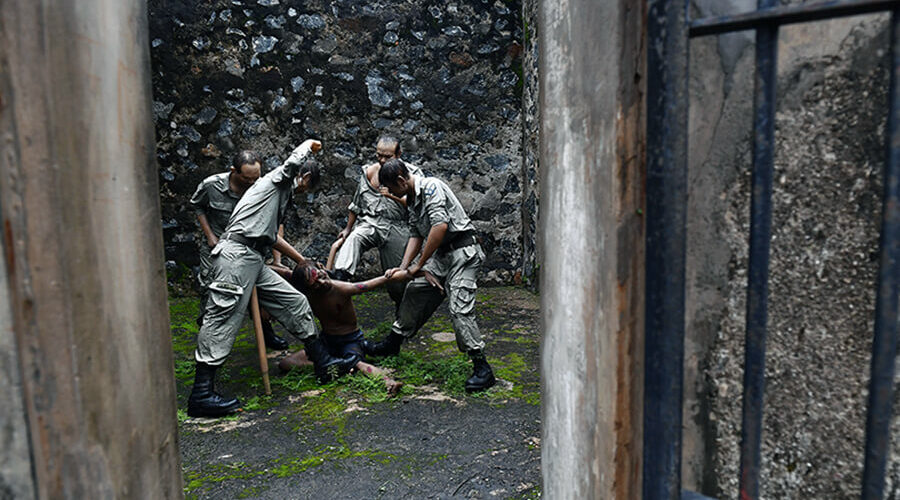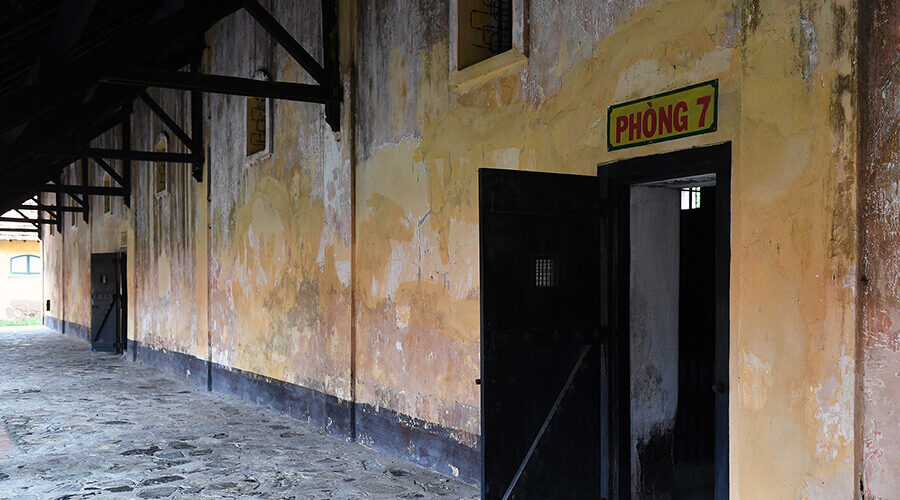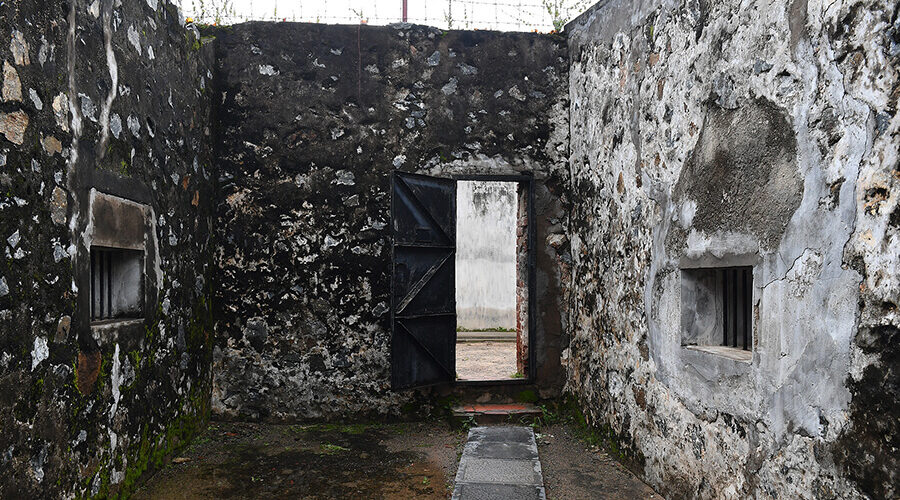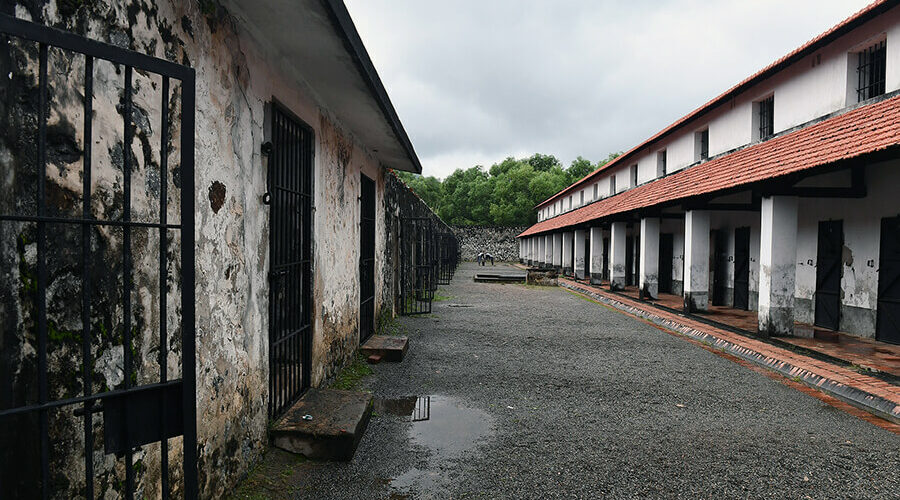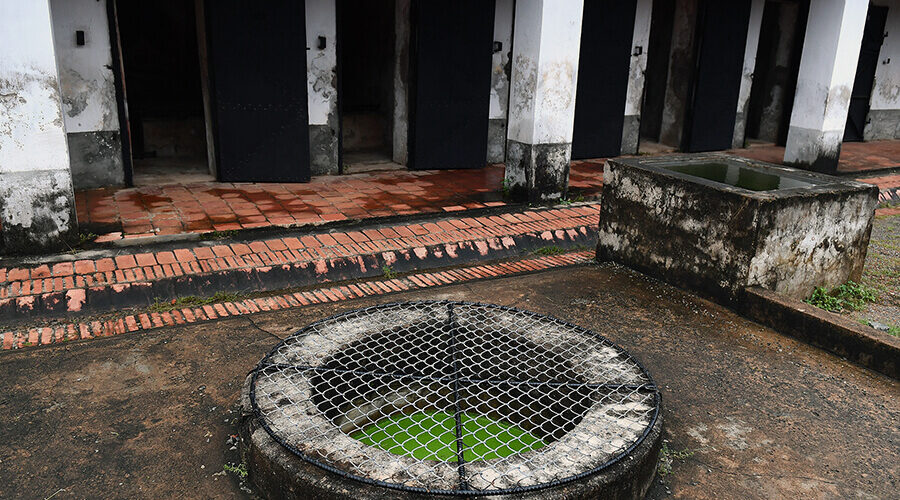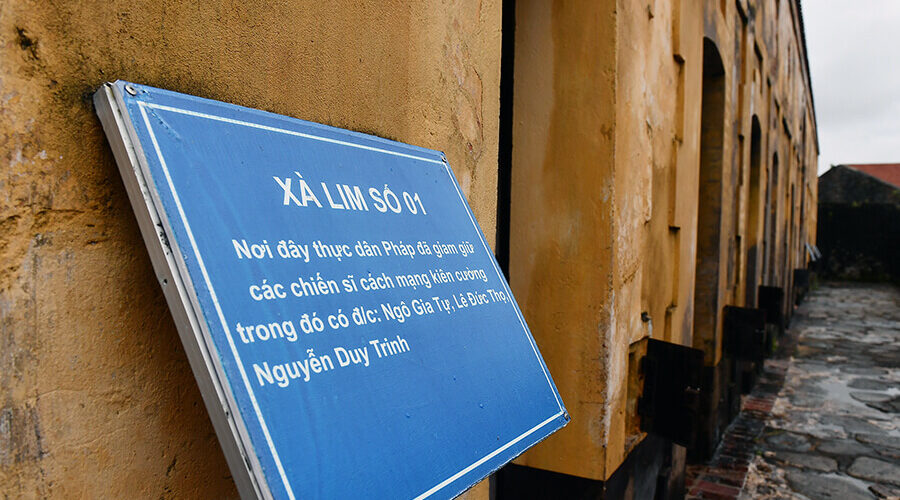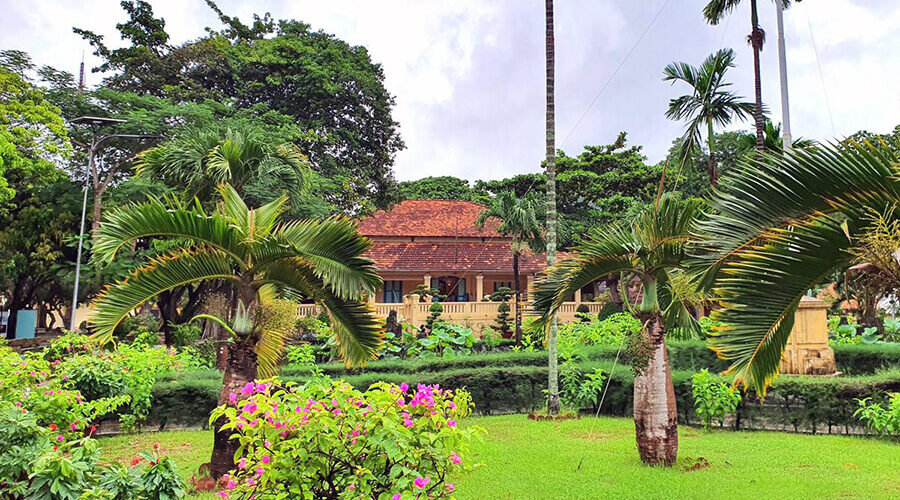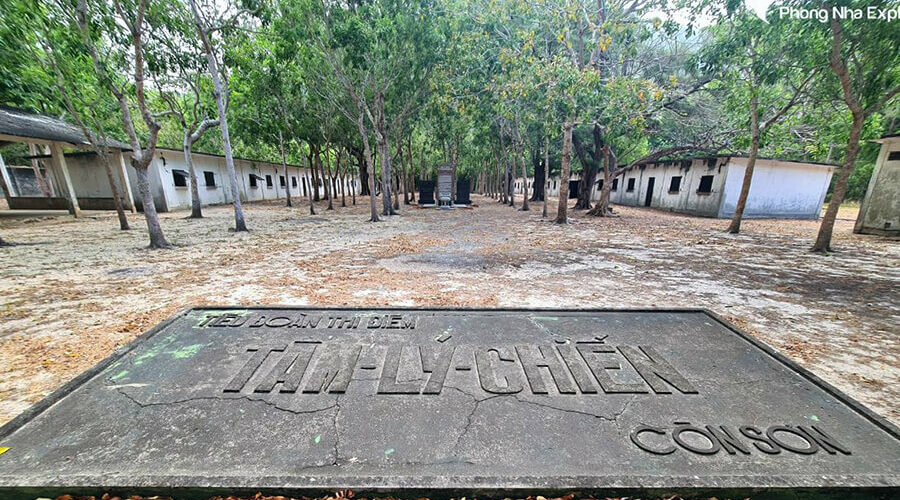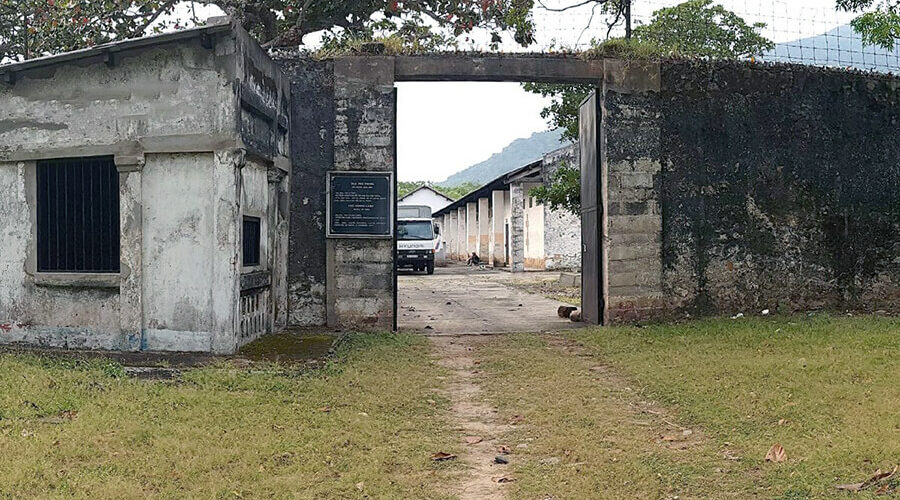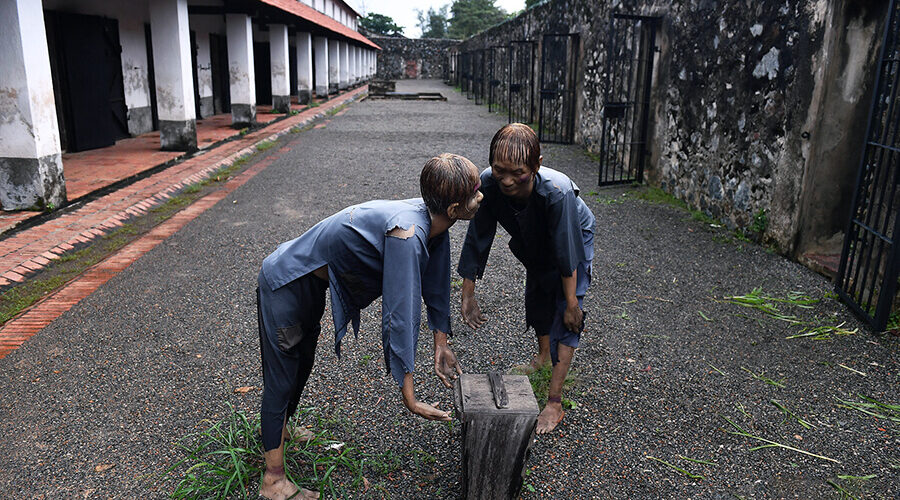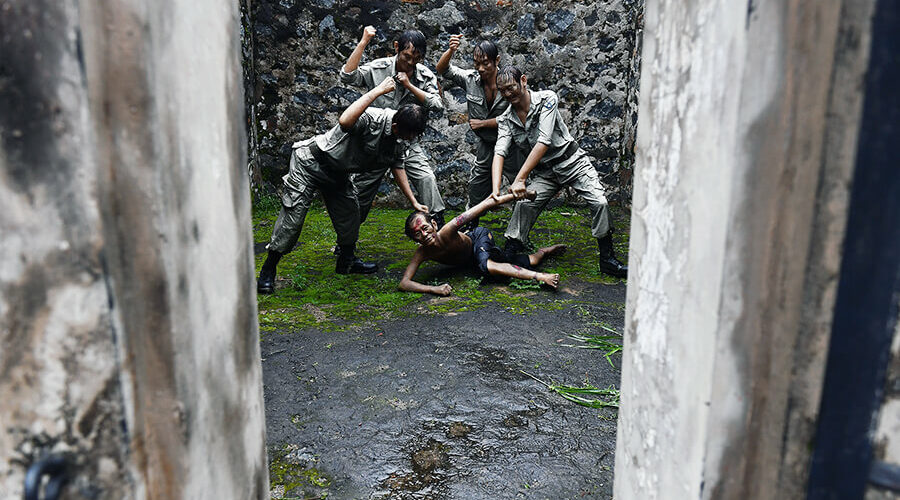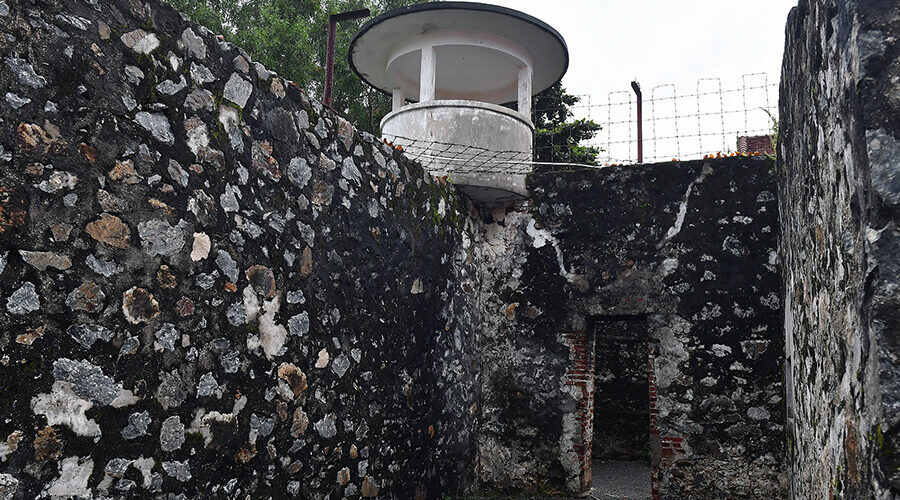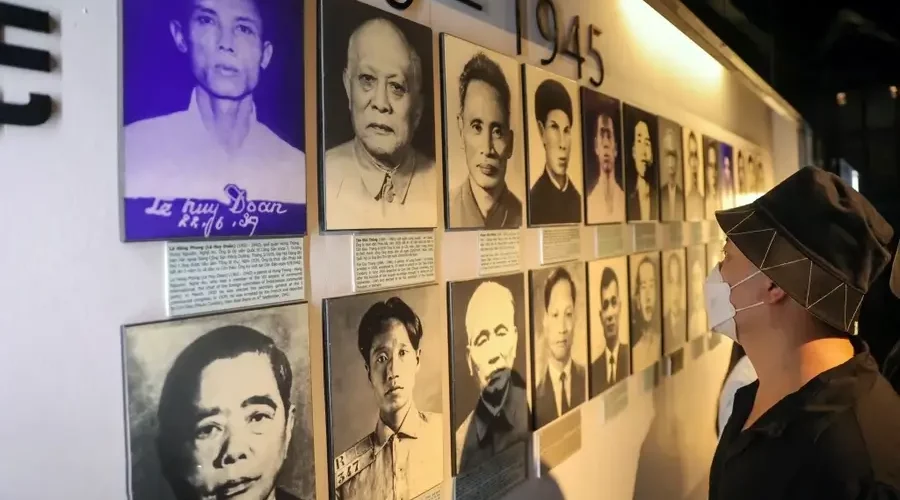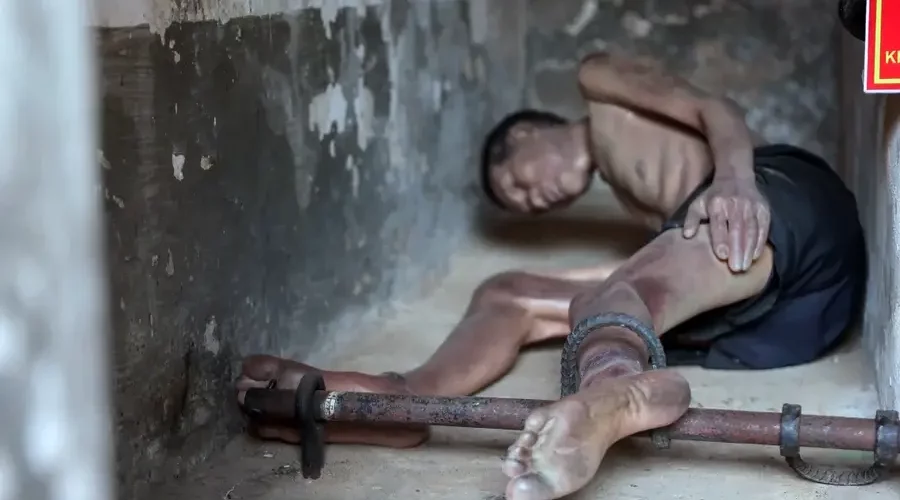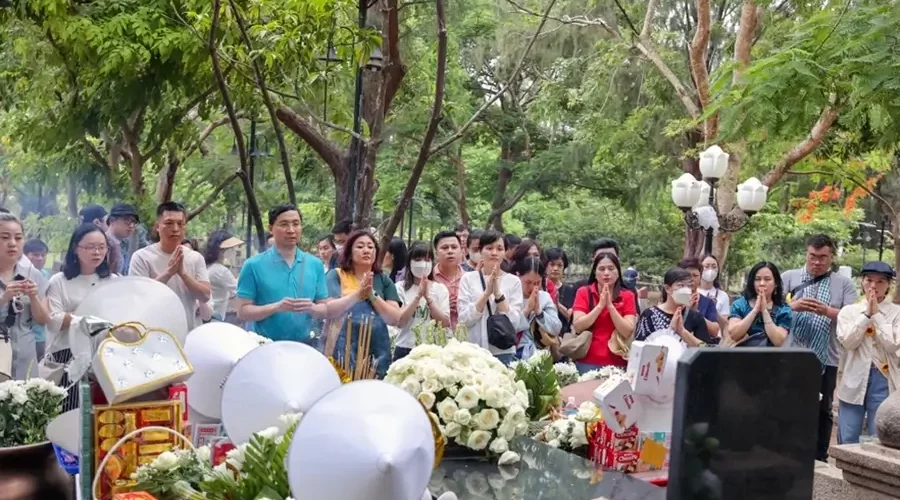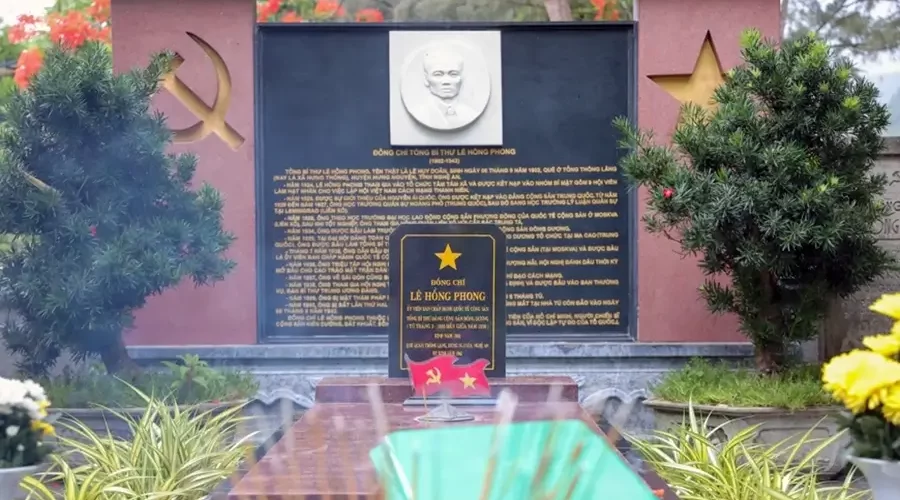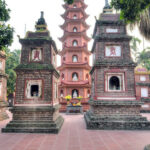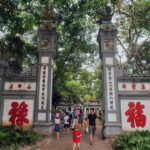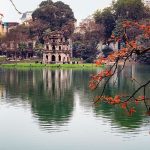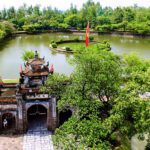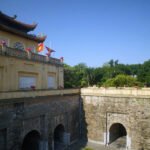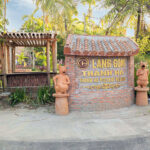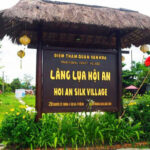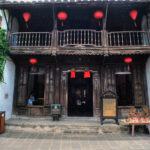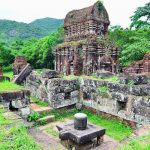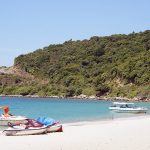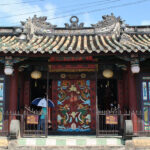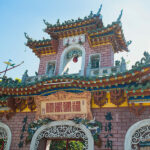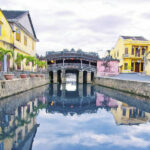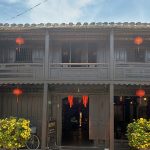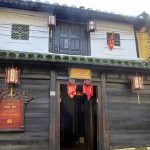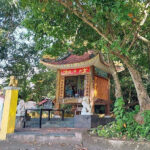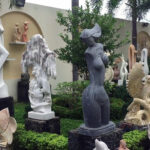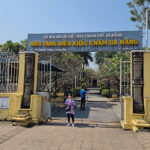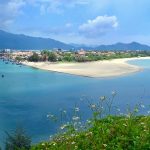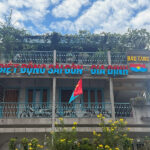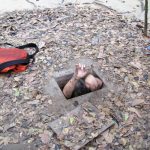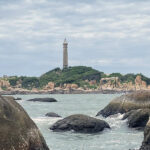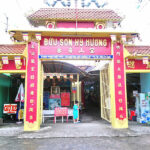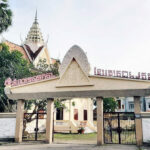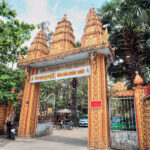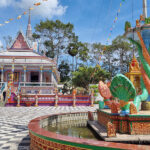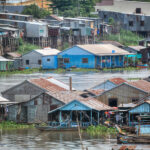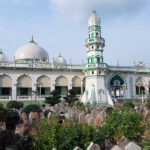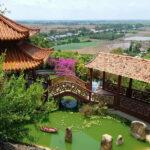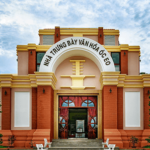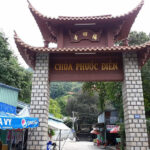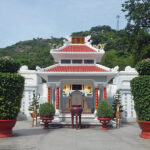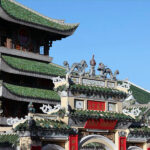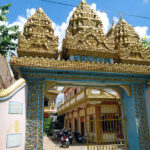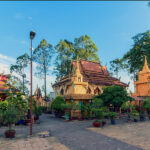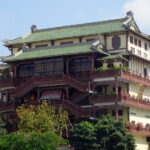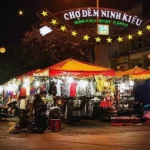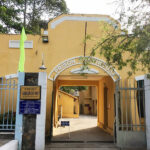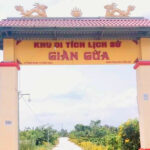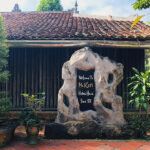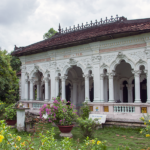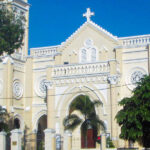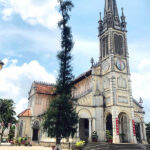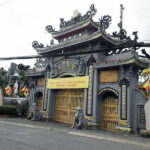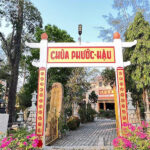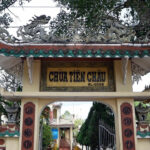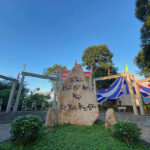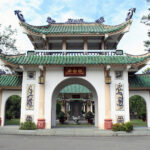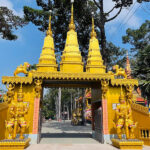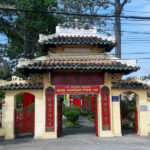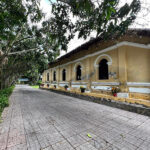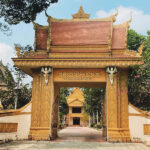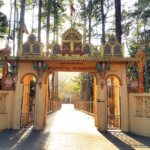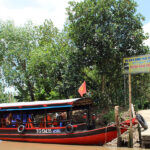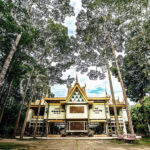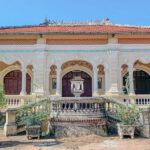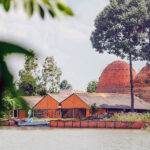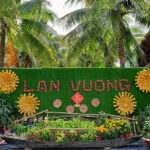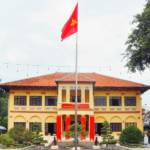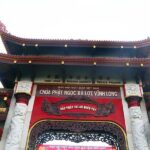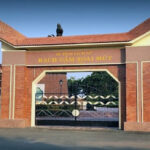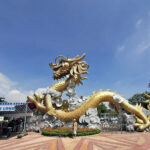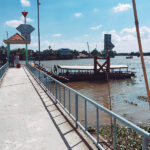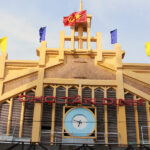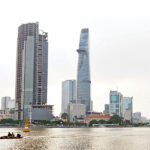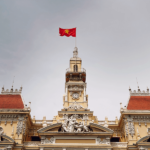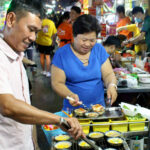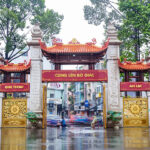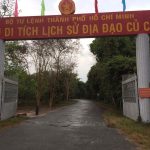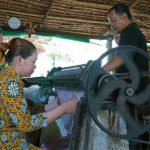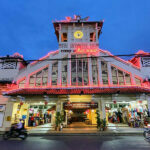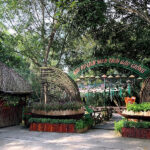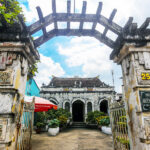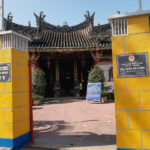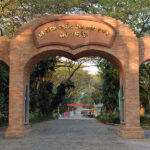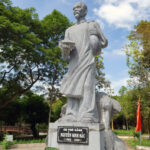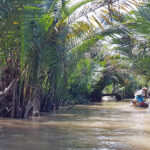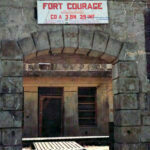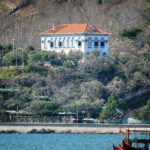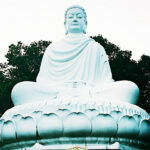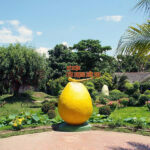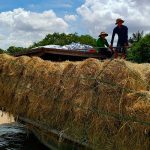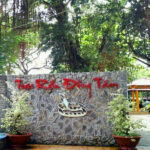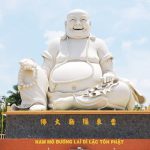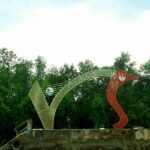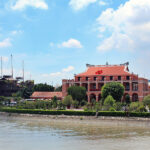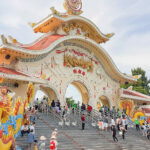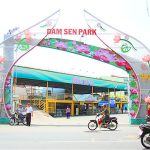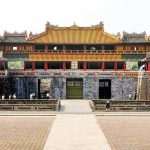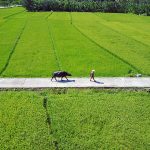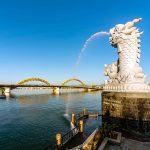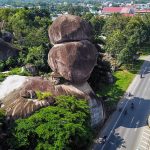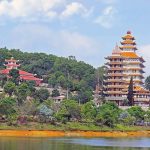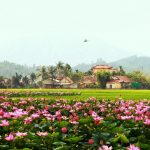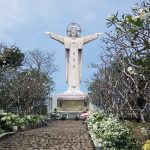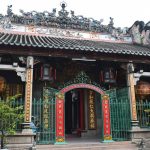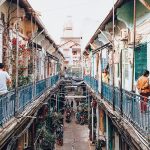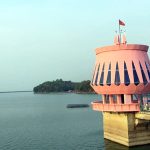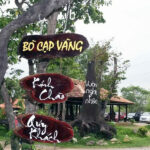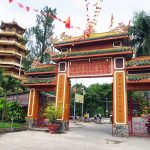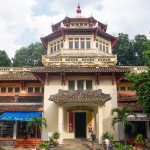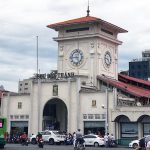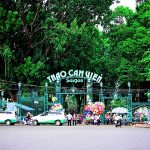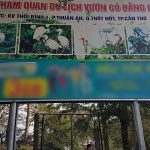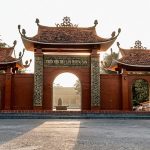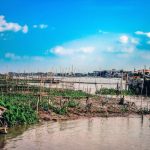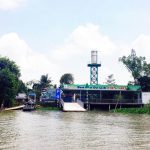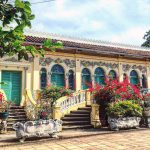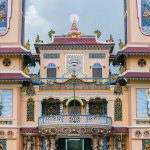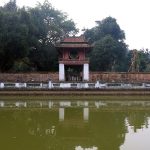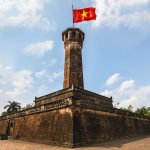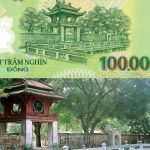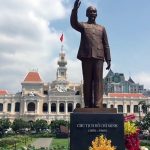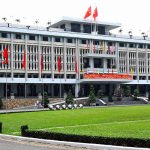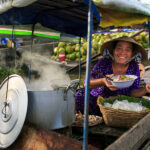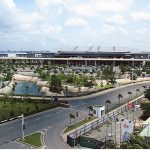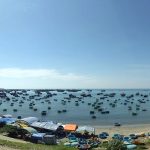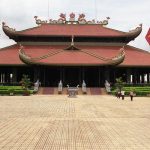Con Dao Prison (Vietnamese: nhà tù Côn Đảo, nhà tù means prison) also know as Côn Sơn Prison, is located offshore Bà Rịa – Vũng Tàu. The island is not only the best place to escape from the bustling city on the weekend or holidays but also a destination where you can discover the brutality of imperialism and colonialism – a hellish place for thousands of prisoners for over a century.
Table of Contents
Con Dao Prison – “Hell on Earth” in Vietnam
On February 1, 1862, Governor Bonard in Cochinchina signed a decision to establish Con Dao Prison. The French colonial government chose Con Dao as the place to build a prison because it was far from the mainland, had no transportation so that the prisoners could not escape.
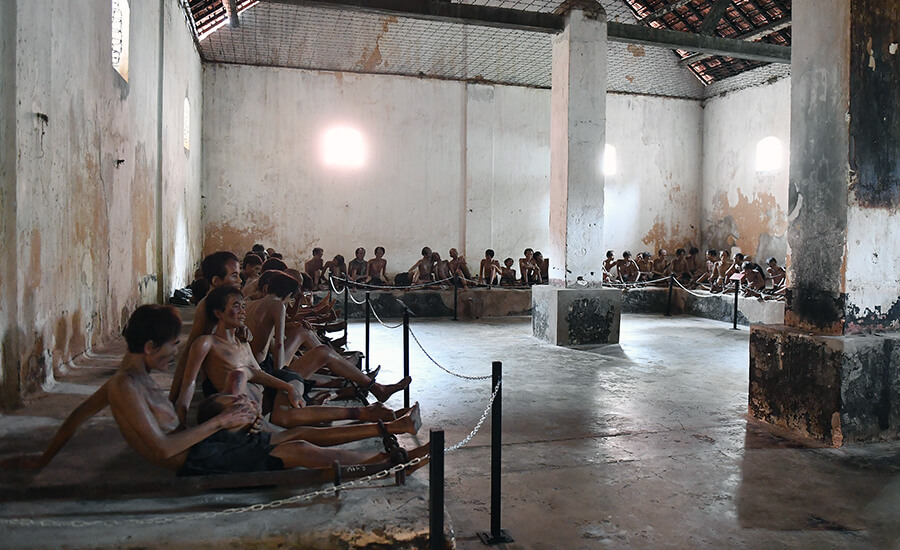
The French colonial government and the Republic of Vietnam built 127 cells, 42 cells, and 504 isolated cells (also known as tiger cages) in Con Dao.
The Con Dao prison system consists of several locations such as Bagne I (Phu Hai Camp), Bagne II (Phu Sơn Camp), Bagne III (Phu Tho Camp), Bagne III (Phu Cuong Camp)…with an area of more than 12,000m². These camps were built to detain and torture patriotic soldiers. Let’s explore the specific “hell on earth” through the camps below:
Phu Hai Camp
The project was built by the French colonialists to imprison revolutionary soldiers and Vietnamese patriots since 1862 and was completely upgraded from 1889 to 1896. In 1896, the prison completed construction of two prison rows facing each other, each row with 5 cells (numbered from left to right 1 to 10).
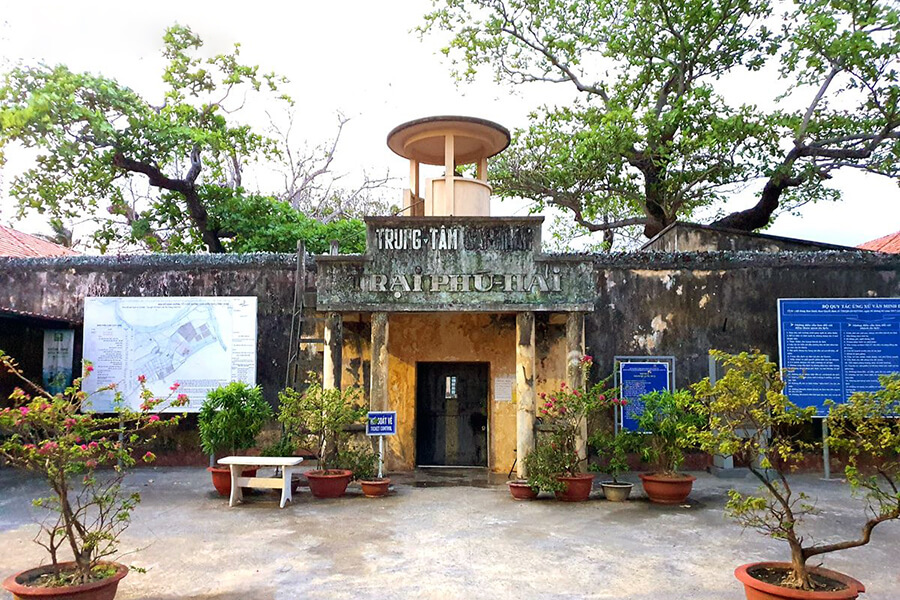
Cell No. 7, where the first branch of Vietnamese Communist Party in Con Dao prison was born (late 1932), later developed into the Con Dao Party Committee, leading the prisoners’ struggle with the contributions of Ton Duc Thang (former President of Vietnam and North Vietnam), Pham Hung (the 2nd Prime Minister of the Government of the Socialist Republic of Vietnam from 1987 to 1988), and other Vietnamese politicians such Le Van Luong, Ngo Gia Tu, Nguyen Van Hoan, Le Van Luong, Nguyen Duy Trinh…
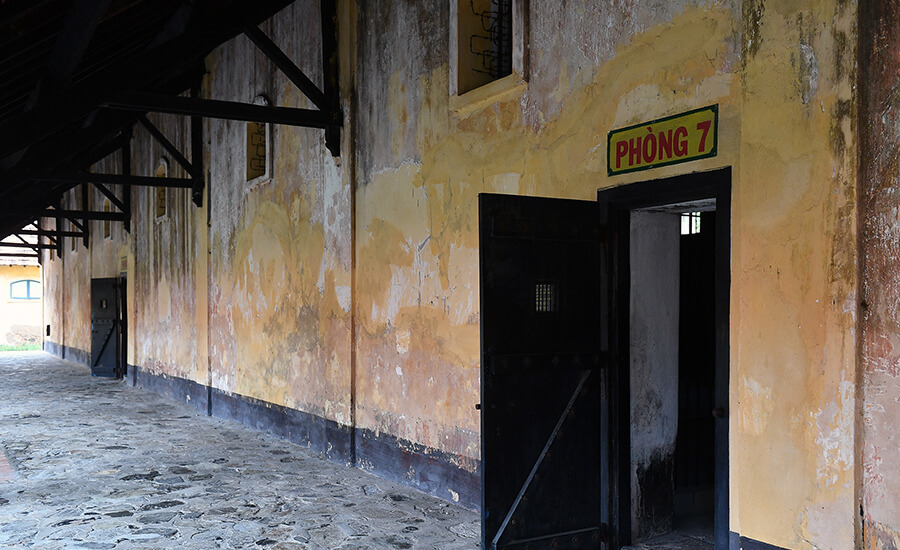
This is the oldest camp in Con Dao prison with 33 cells. Besides the cells, Phu Hai camp also has a clinic, lecture hall, cafeteria, and kitchen, and clinic for prisoners. However, all these things were built to mislead the public.
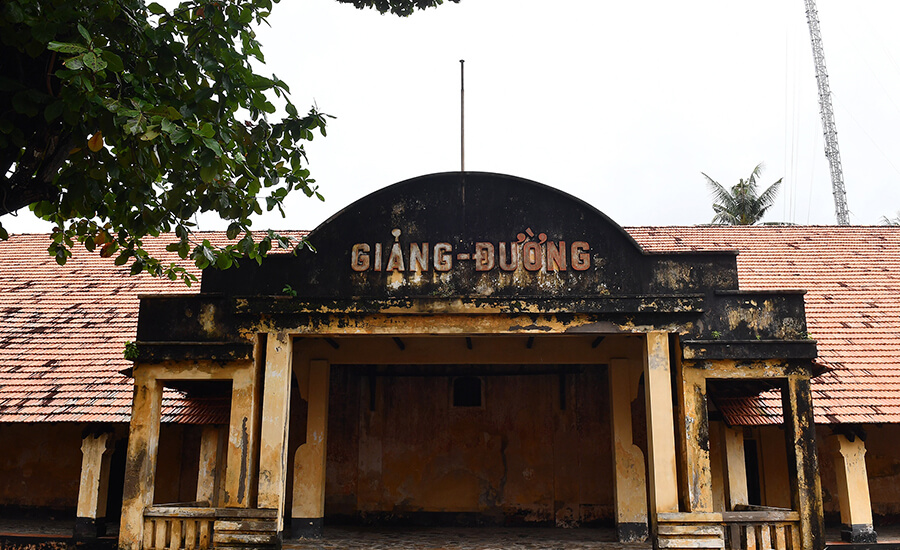
The lecture hall
The farm yard was also planted with flowers and ornamental plants like a park. This is a project that is both a formality to deal with public opinion and used to bribe political prisoners to secede and denounce communism. 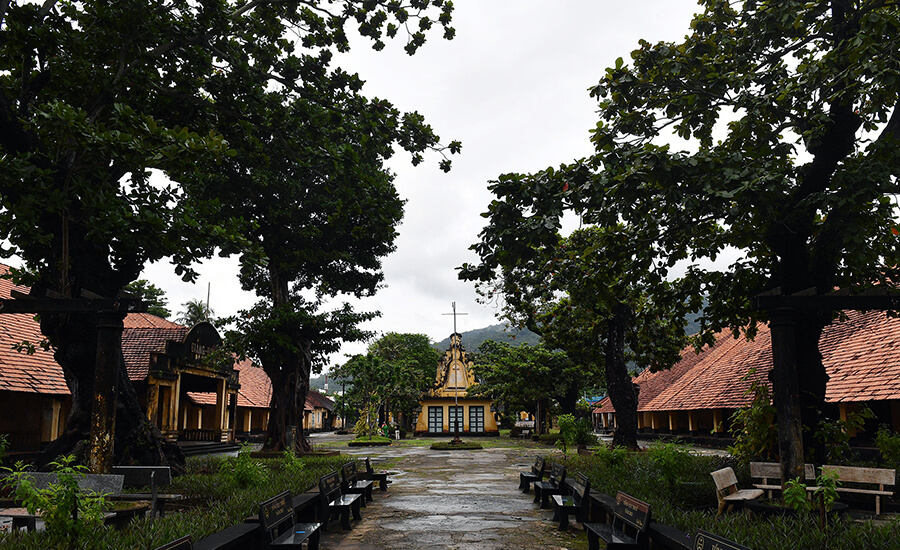
At the end of the prison row, on the left side, there is also a “special prison” where detains high-ranking officials such as: Ton Duc Thang, Pham Hung, Le Van Luong, Ngo Gia Tu. Next is the “rice mill”, which is both a place of forced labor and a place of exile for prisoners. This room is surrounded by stone walls, has a ceiling made of black fabric, a winch, and only one door.
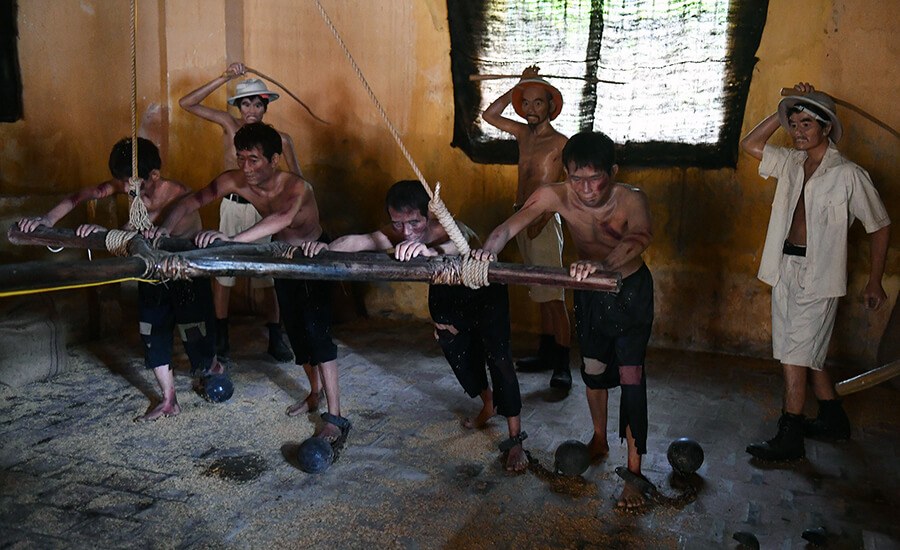
Inside there are 5 mills made from wine barrels sawed in half and filled with clay inside. Each mill requires 4-6 prisoners to pull. In addition, prisoners here also have to endure the additional torture of being chained to a chain with a dumbbell weighing 3-7kg.
Phu Son Camp
Located next to Phu Hai camp is Phu Son camp built-in 1916. This prison is also designed like other prisons, only larger and with more cruel forms of torture. The camp has 13 cells, 1 separate area with 14 stone cellars, and 1 darkroom.
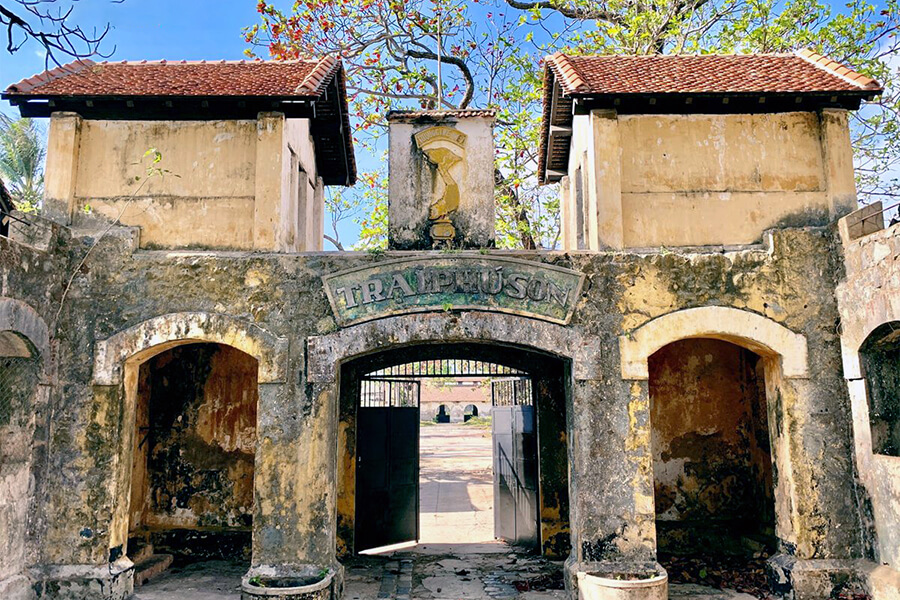
The door to Phu Son camp
At Phu Son camp, the French colonialists also covered the public’s eyes when they built a club, a supervisor’s office, a cafeteria, a barber room, etc.
Phu Tho Camp
The camp was built in 1928, with a total area of about 12,700 square meters. There are 03 cells a medical room, a kitchen and a dining room, a dormitory room and a separate room, a row of houses for prisoners. Before 1945, the camp had 2 rows of concentration cells, 1 isolation cell, 1 kitchen, canteen, and 1 infirmary to isolate patients with infectious diseases.
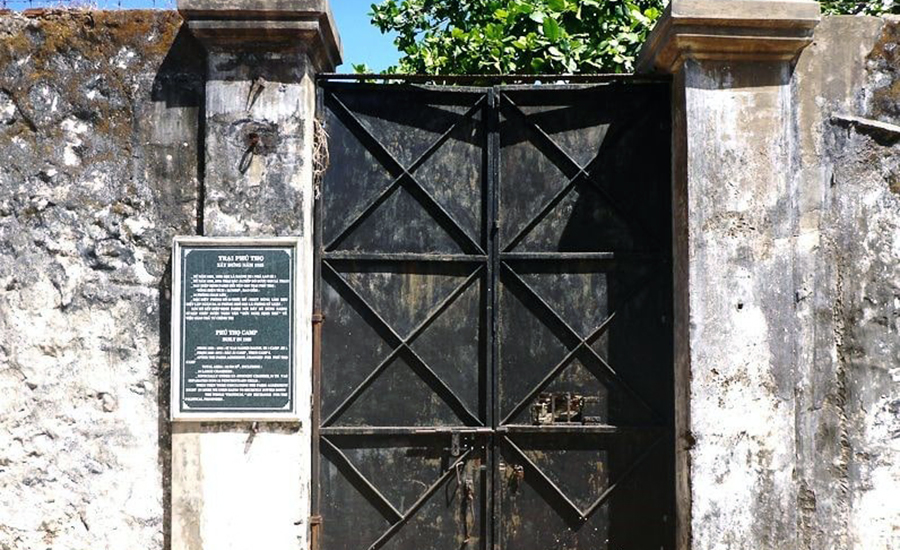
After the August Revolution, the camp was renovated, leaving only 2 blocks of cells. The cells were numbered from 1 to 8. When American came, this camp built two more cells, number 9 and number 10, located behind the infirmary. The prisoners held here have given it the nickname “ Separated Chicken Shed”.
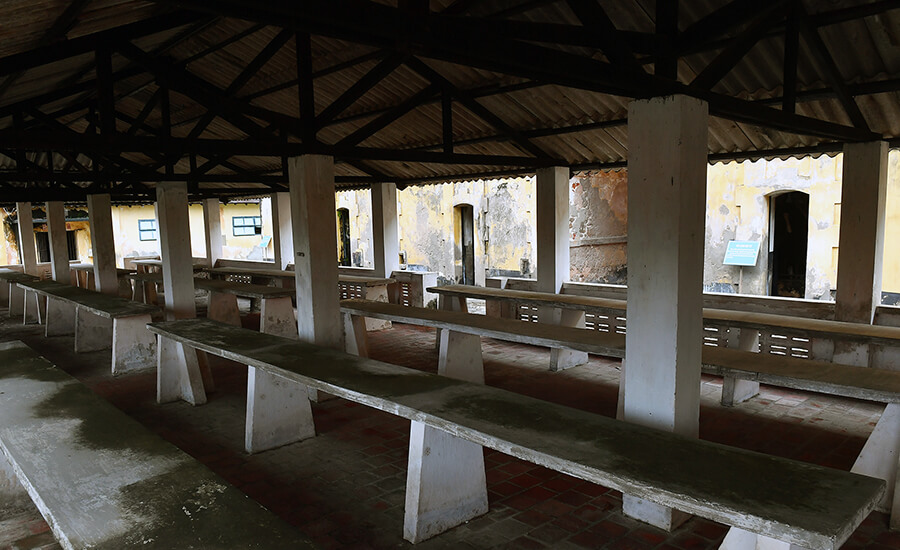
In addition, this area near Phu Phong Camp was built by the Republic of Vietnam in 1962, combined with Phu Tho Camp to form a cluster around the famous isolated area “French Tiger Cage”.
Phu Tuong Camp
This place is known as the “French tiger cage”, built in 1940, one of the French colonial prison systems secretly built to detain and torture political prisoners. The system has two layers of walls surrounding a secret row of tiger cages in the middle. In order to not be able to determine the direction, the prisoners were all blindfolded before being brought here.
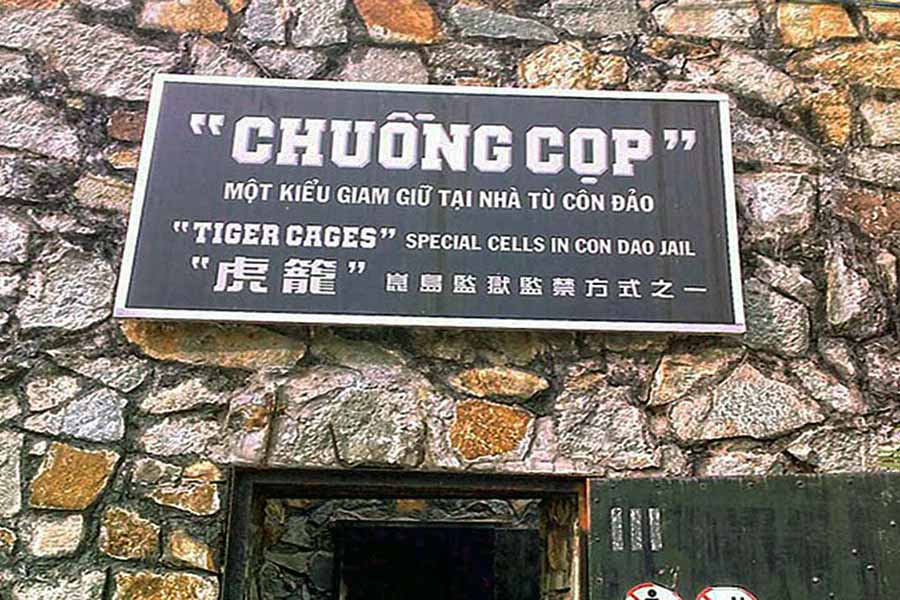
The entire tiger cage is 5,475 square meters wide, the cell area alone is 1,408 square meters, and the empty space is more than 2,100 square meters. The French tiger cages have 120 solitary confinement rooms divided into 2 zones. Each zone has 60 separate roofless cells, divided into 4 rows. This roofless room is where prison guards torture prisoners with sticks and threw lime on them, by exposing them to the sun and rain, or beating them.
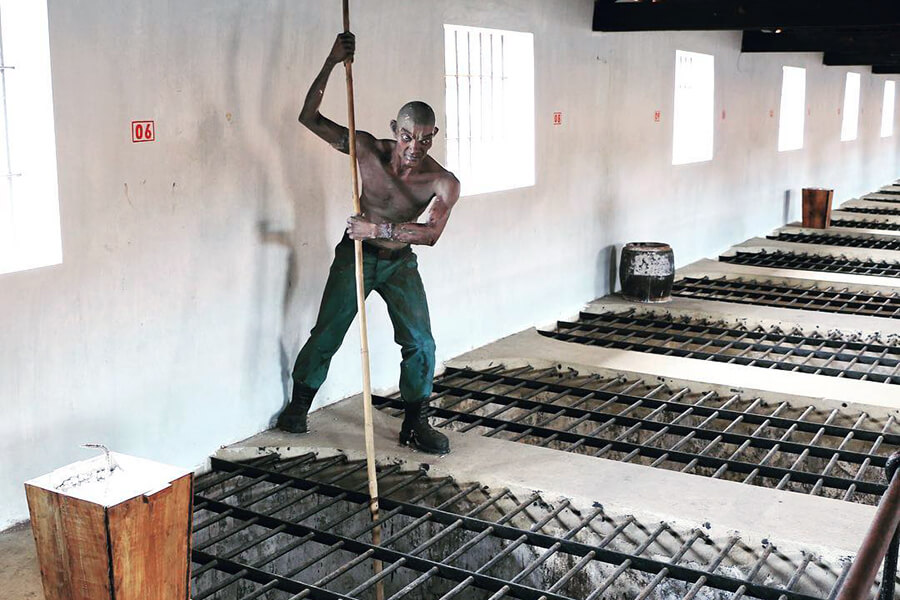
Simulate torture scenes
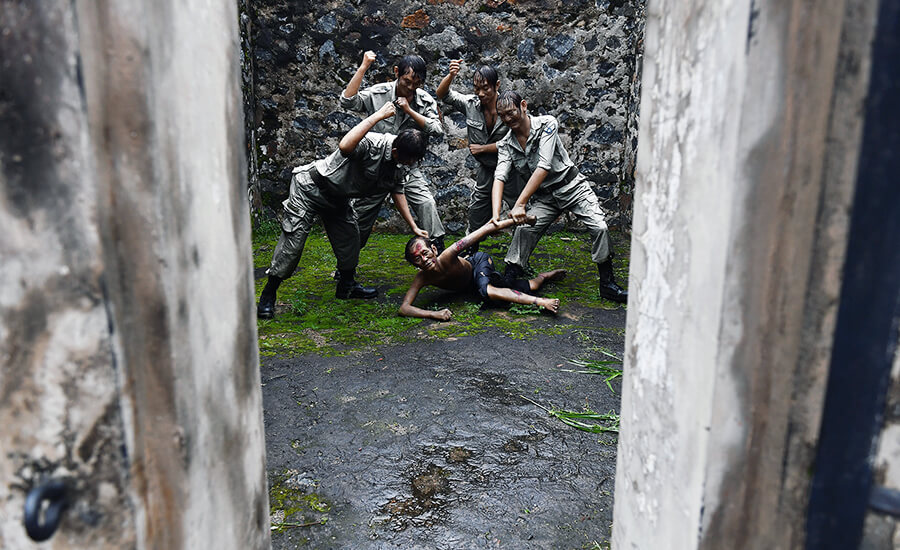
simulation of scenes of mistreatment and torture of prisoners
At its peak, the tiger cage hold thousands of prisoners. From 5 to 12 people were locked in a room. They have to eat, sleep, defecate, and urinate right on the spot, with no space to lie down or even sit. At night, they sleep stacked on top of each other, which is very miserable.
Resilient female political prisoners were once detained here. Prominent among them is former Vice President Truong My Hoa.
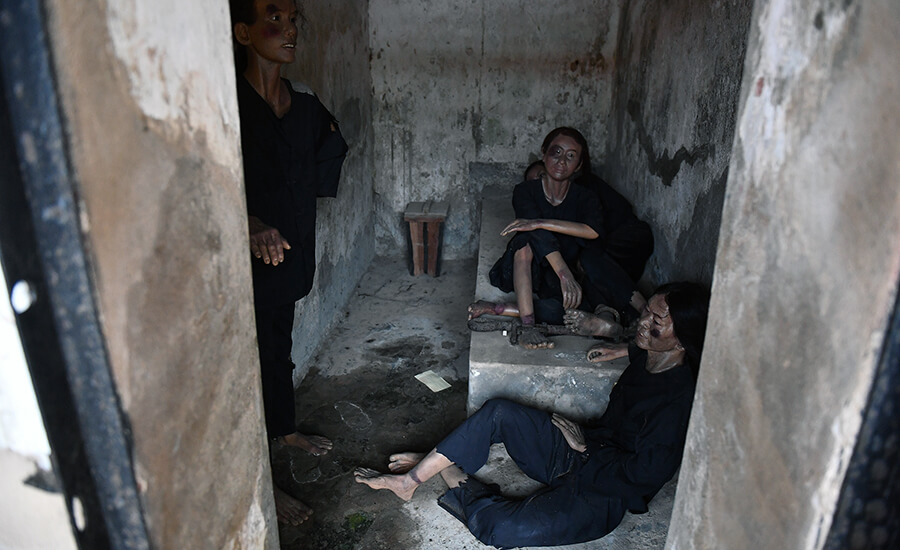
Phu Binh Camp
Also known as Camp 7 is famous for the American Tiger Cages. Set up in 1971 with an area of 25,788m², there are 384 cells divided into 4 areas include AB CD EF GH, each area has 48 tiger cages, warehouse, kitchen, monitoring room, infirmary.
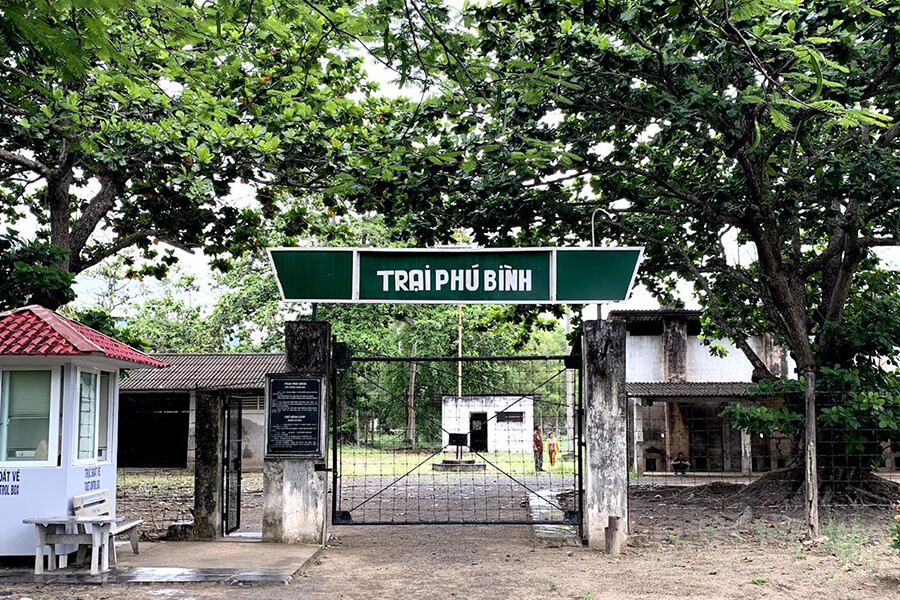
The camp is surrounded by barbed-wire fences and concrete walls.
Separated Cow Shed
Formed in 1876 to raise cows to create a food source for the prison administration, at times this place also raised goats, horses, pigs, chickens, ducks, etc., also worked as fields and cut firewood to serve the dominion systems. Initially, there were 2 cow sheds and a cow manure cellar, the cellar was 3m deep. In addition, there are 24 compartments for raising pigs. In 1930, the French colonialists built 9 more cells and used the cow shed as a prison for female prisoners. These cow manure cellars were also used to soak prisoners as a method of torture.
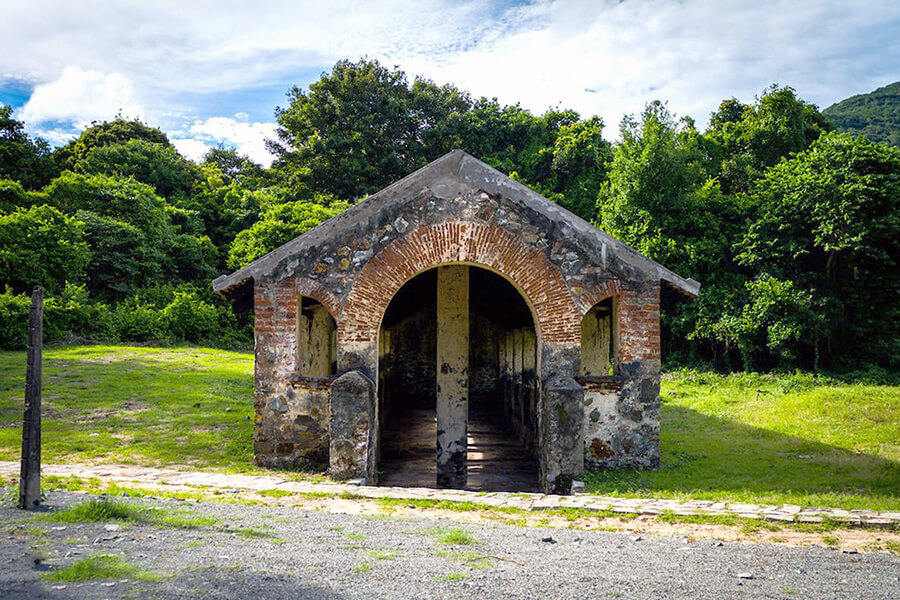
And in 1963, the cow shed and 24 pig pens were repaired and rebuilt into 33 solitary confinement rooms, divided into 3 zones A-B-C. This is where prisoners do hard labor and is also the prisoner’s cemetery, named “bãi Sọ Người” (human skull area) and also the first cemetery of Con Dao, followed by Hàng Keo Cemetery and Hang Duong Cemetery.
Hang Duong Cemetery
Covering an area of about 20 hectares is the resting place of thousands of revolutionary soldiers and Vietnamese patriots. Many of the graves are unmarked or marked and numbered notable graves include those of Le Hong Phong, Nguyen An Ninh, and Vo Thi Sau.
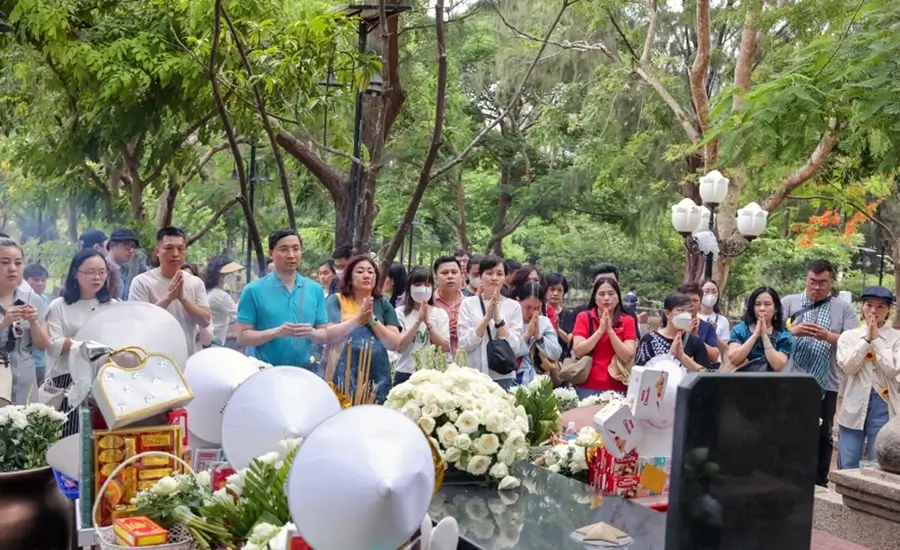
Tourists come to visit, and express gratitude at the tombs of heroes in Con Dao
In 1992, this cultural relic was embellished, and divided into 4 areas:
– Area A: Includes 688 graves, most of which were buried before 1945.
– Area B: Includes 695 graves, buried from 1945 to 1960, including the tomb of Ms. Võ Thị Sáu.
– Area C: Includes 372 graves, buried from 1960 to 1975.
– Zone D: Includes 148 graves from Hòn Cau and Hàng Keo cemeteries gathered.
House of island lord
Has a total area of 18,600 square meters, including dependent houses, staff housing, island lord’s house, yard system, garden, gate and surrounding fence. This place used to be the living and working place of 53 generations of island lords, during the time the prison system in Con Dao operated. After the liberation in 1975, the island lord’s house was requisitioned as a display house of the Con Dao Historical Relic Area.
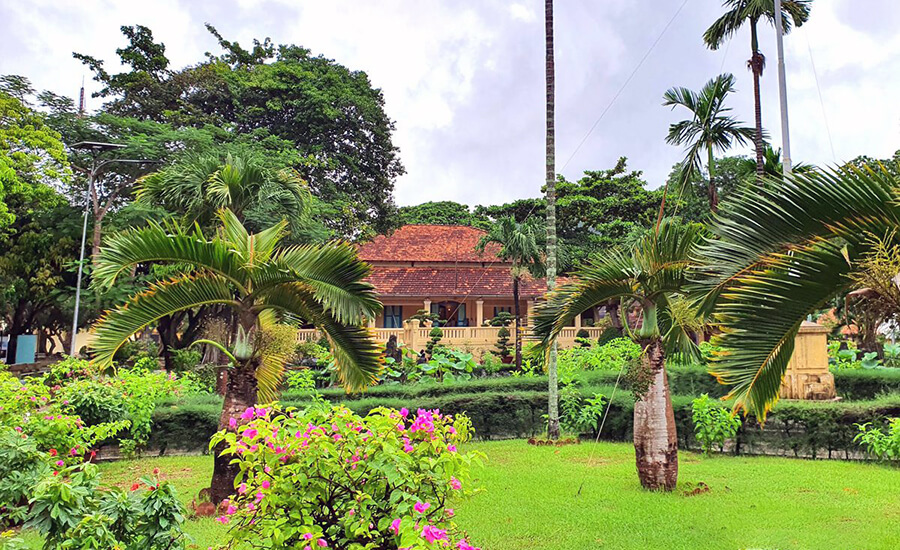
The island lord’s house has a total area of 18,600m2, including buildings: outbuildings, staff housing, island lord’s house, yard system, gates and surrounding fences.
Why so many people come to visit this prison?
Con Dao was known as the harshest prison in Indochina, with the name “Hell on Earth”. This is a special relic, home to the most notorious prison systems of the French colonialists, American imperialists, and their henchmen with political prisoners. It’s exposing the regime of forced, massacred, tortured, and imprisoned revolutionary soldiers and prisoners. More than 22,000 prisoners lost their lives on the island. The most famous are Vo Thi Sau, the 19-year-old an independence activist; Pham Van Dong and Ton Duc Thang, who became long-serving prime minister and president of Vietnam respectively; Le Duc Tho,Vietnamese revolutionary, general, diplomat, and politician; Nguyen Anh Minh, radical Vietnamese political journalist…
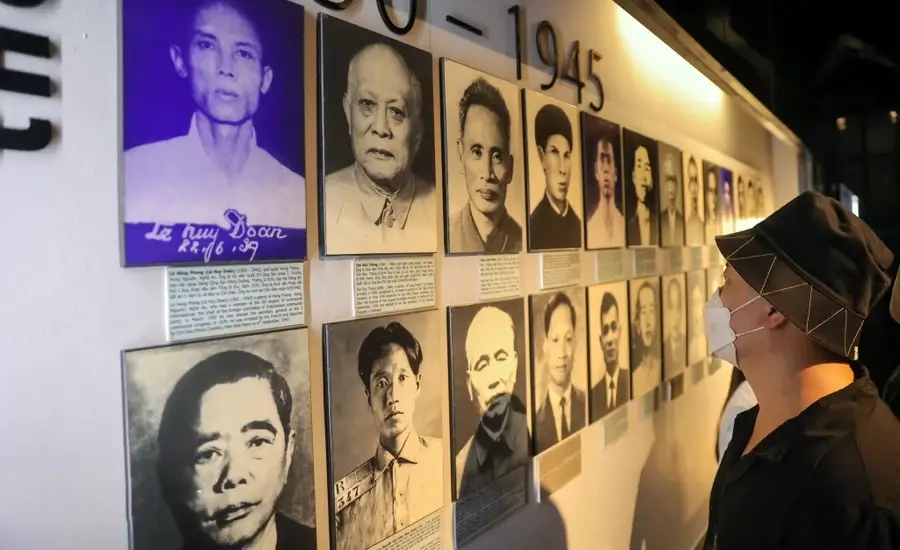
Every year, thousands of Vietnamese, at all ages, come on pilgrimages to remember national heroes, friends, or relatives who were imprisoned or died on the island. For all of us, it’s impossible to ignore the island’s grim past and scenic surrounds of this historical area.
How to visit Con Dao prison?
As for high-speed boats, there will be many departure points to Con Dao such as Ho Chi Minh, Vung Tau, Can Tho, Soc Trang,… ticket prices will range from 360,000 to 950,000 VND depending on the type of tickets, type of seats, routine…
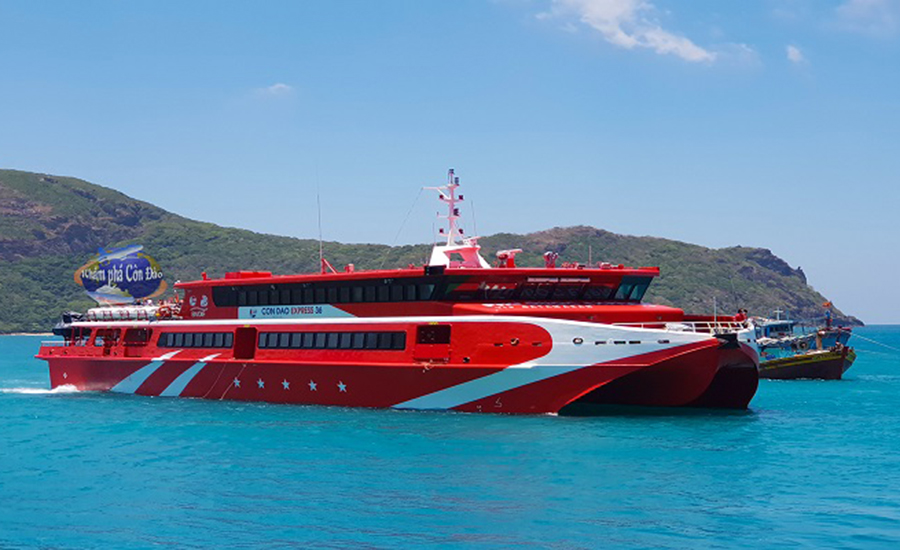
Currently, tourists can travel to Con Dao in many ways such as plane tickets to Con Dao or by speedboat. For airplanes, you will be able to choose Tan Son Nhat (Hochiminh city) – Con Dao air tickets (cost from 3,000,000 VND for around trip) or Can Tho City – Con Dao (cost from from 1,800.000 VND/1 way). Passengers depart from another city such as Noi Bai (Hanoi), Danang, Nha Trang…need to transit in Ho Chi Minh.
Con Dao Prison is located right in the center of Con Dao district, visitors can get here by many means such as renting motorbikes, bicycles, electric cars,… The road is very simple so you can be completely at ease. wandering mind.
Source: collected by An
Follow us for the best deal with Vietnam package tours and visa services!
